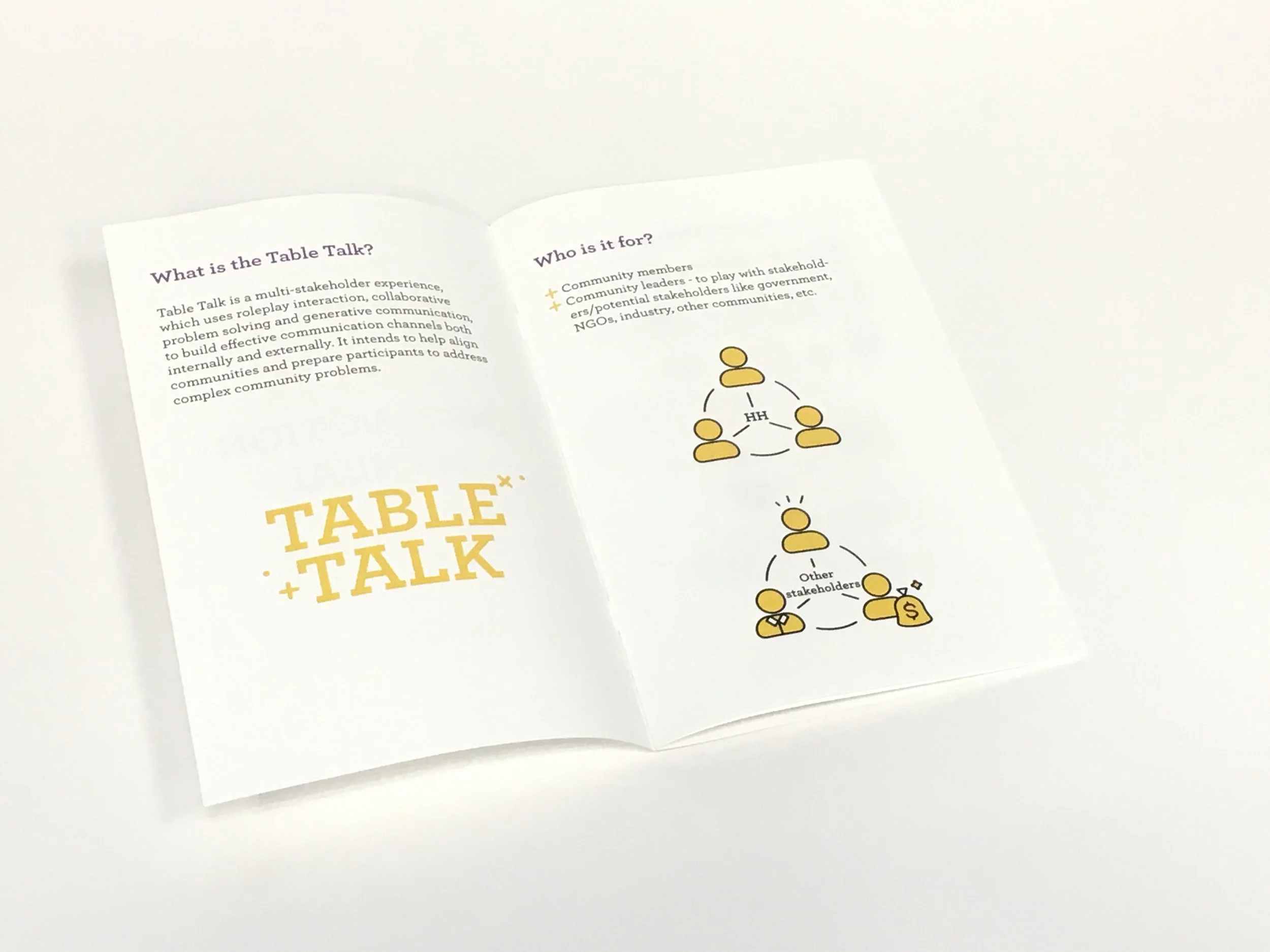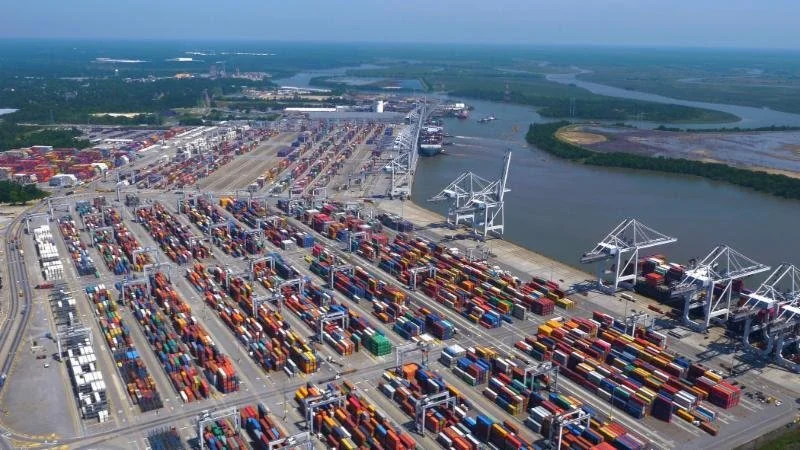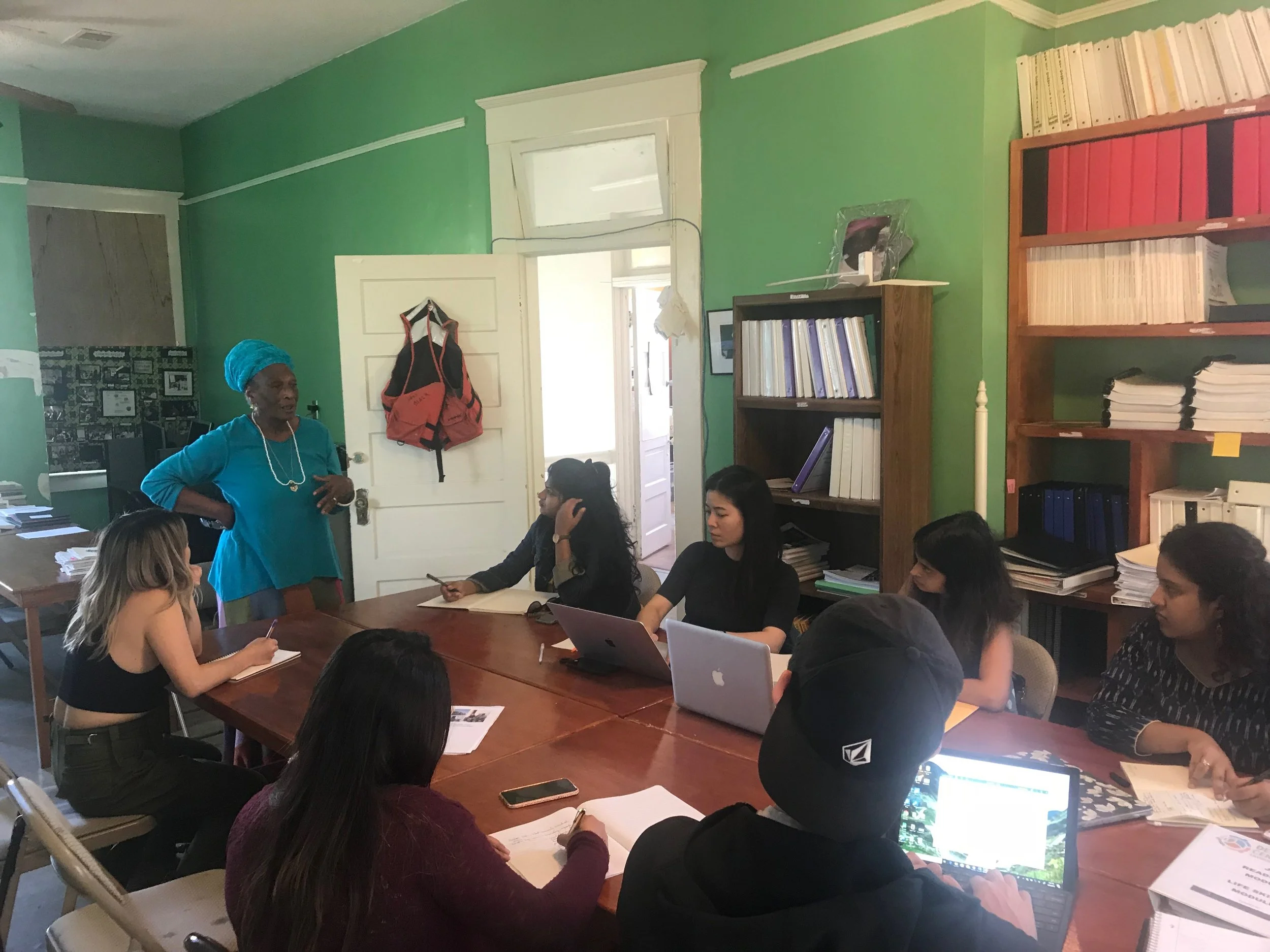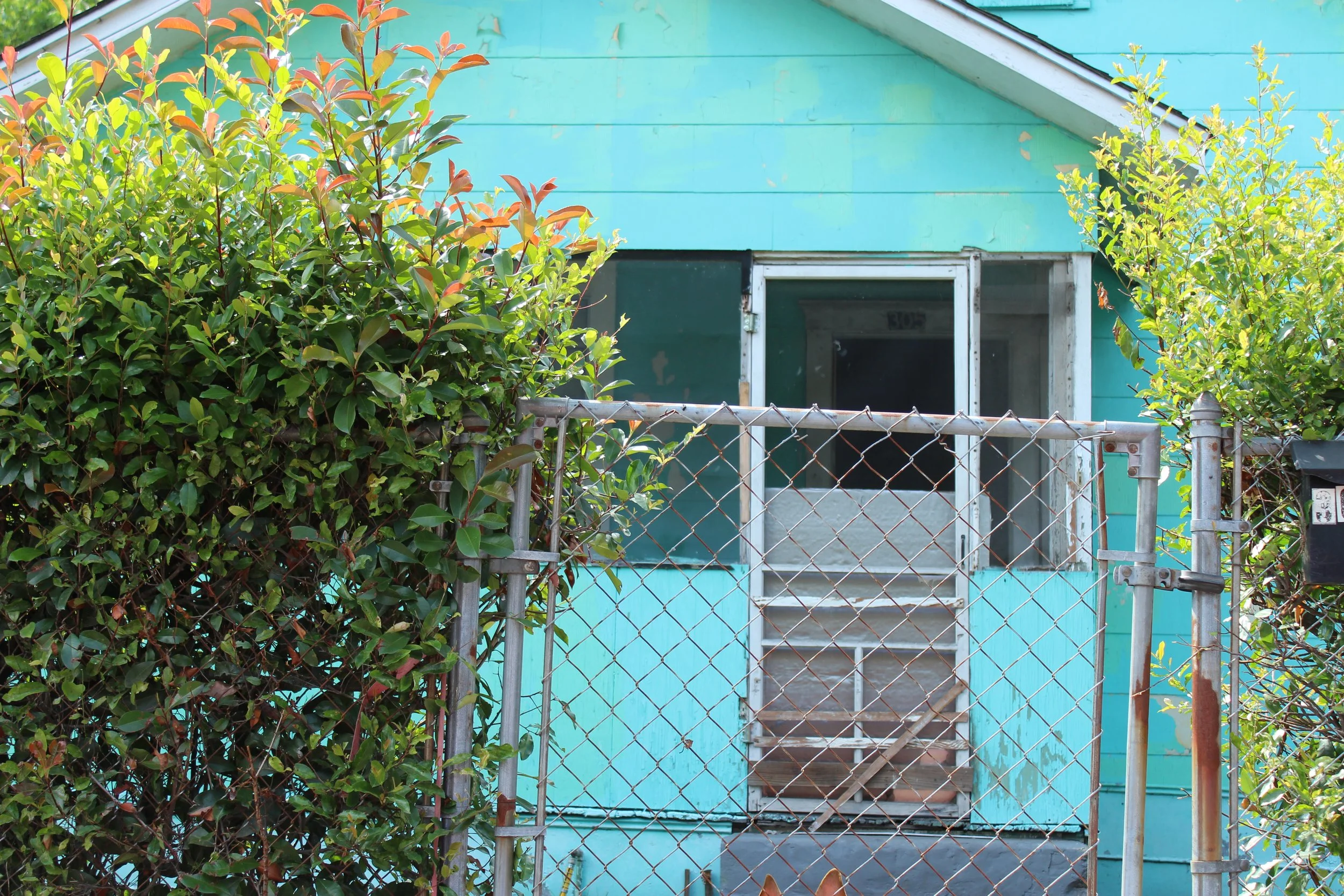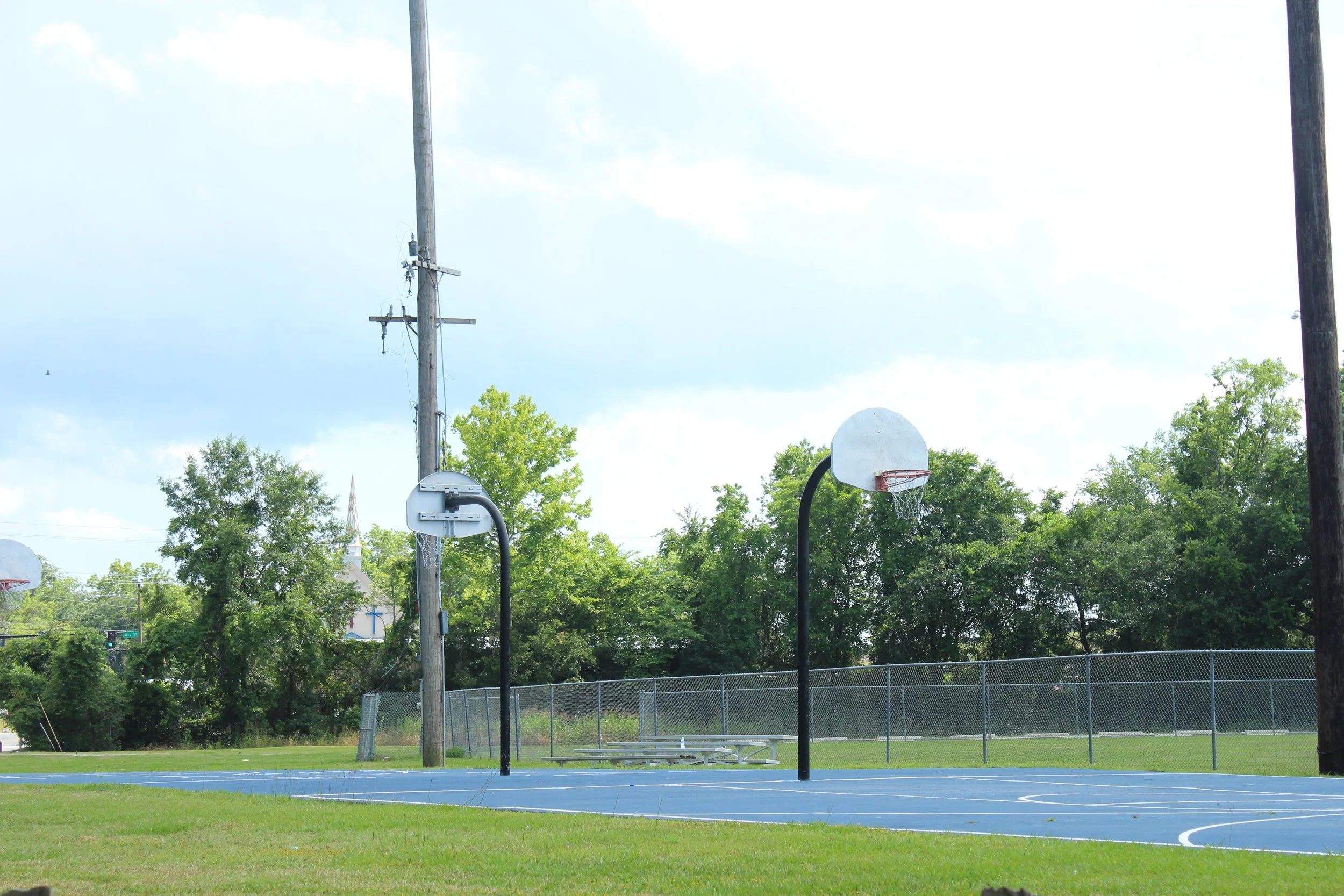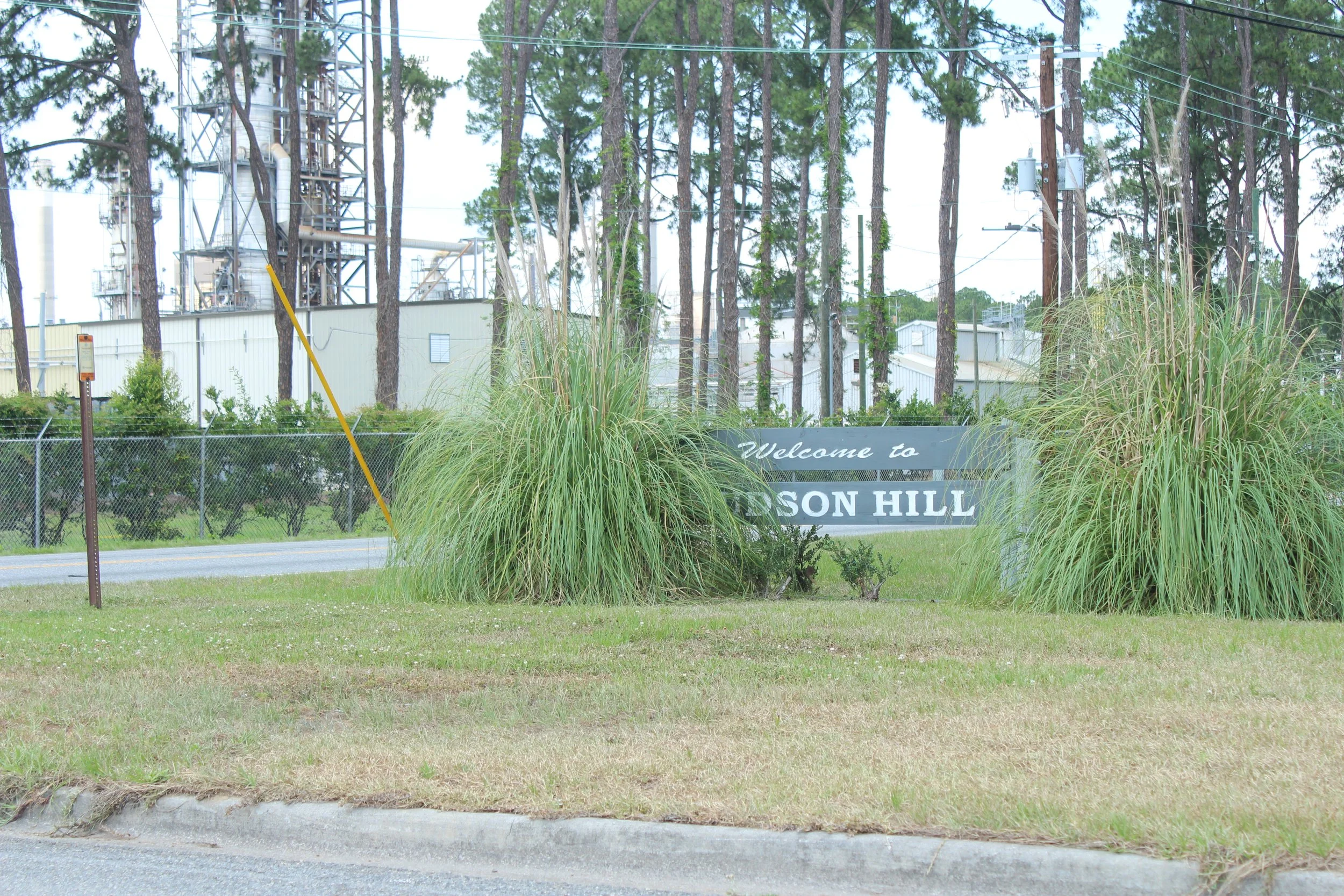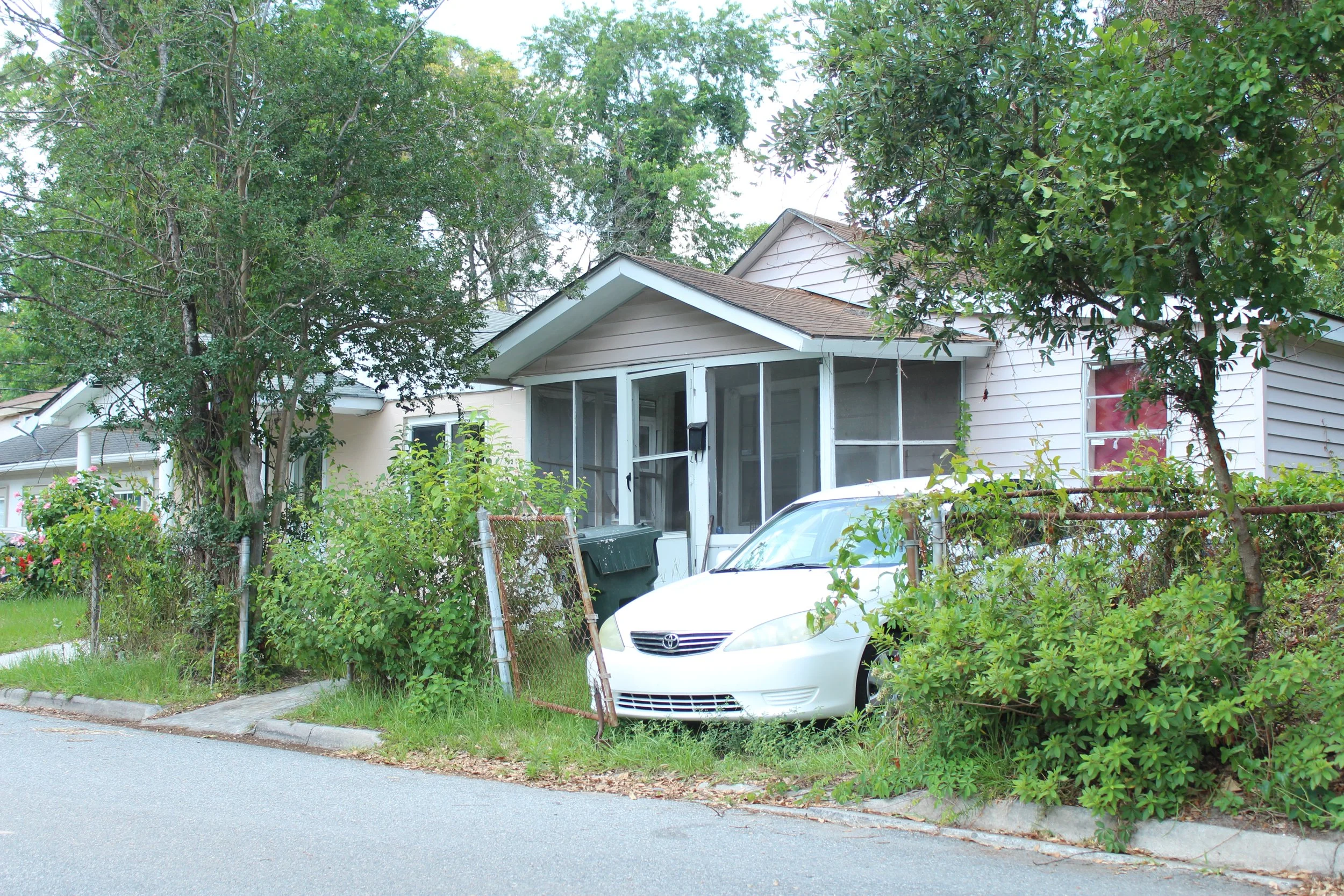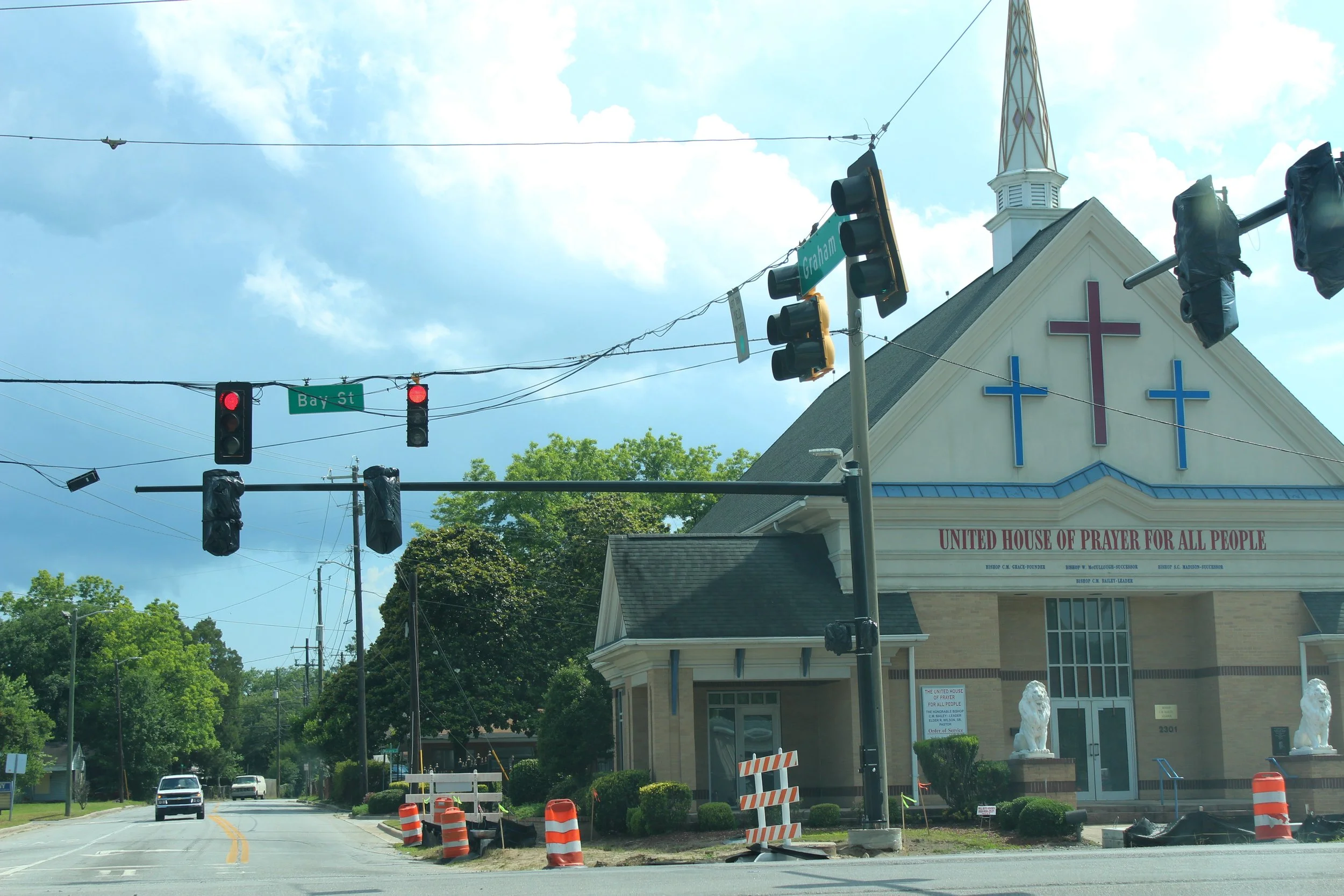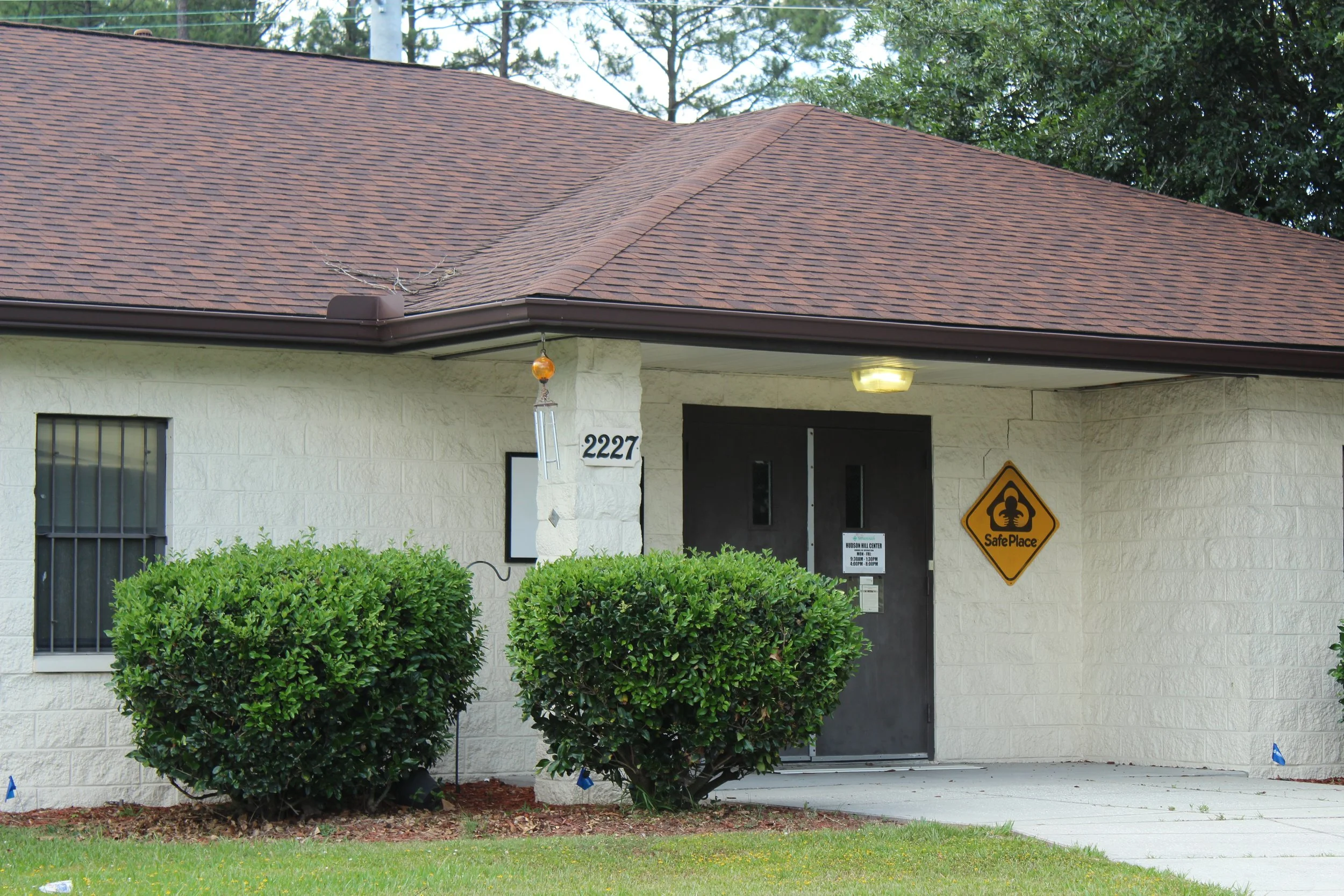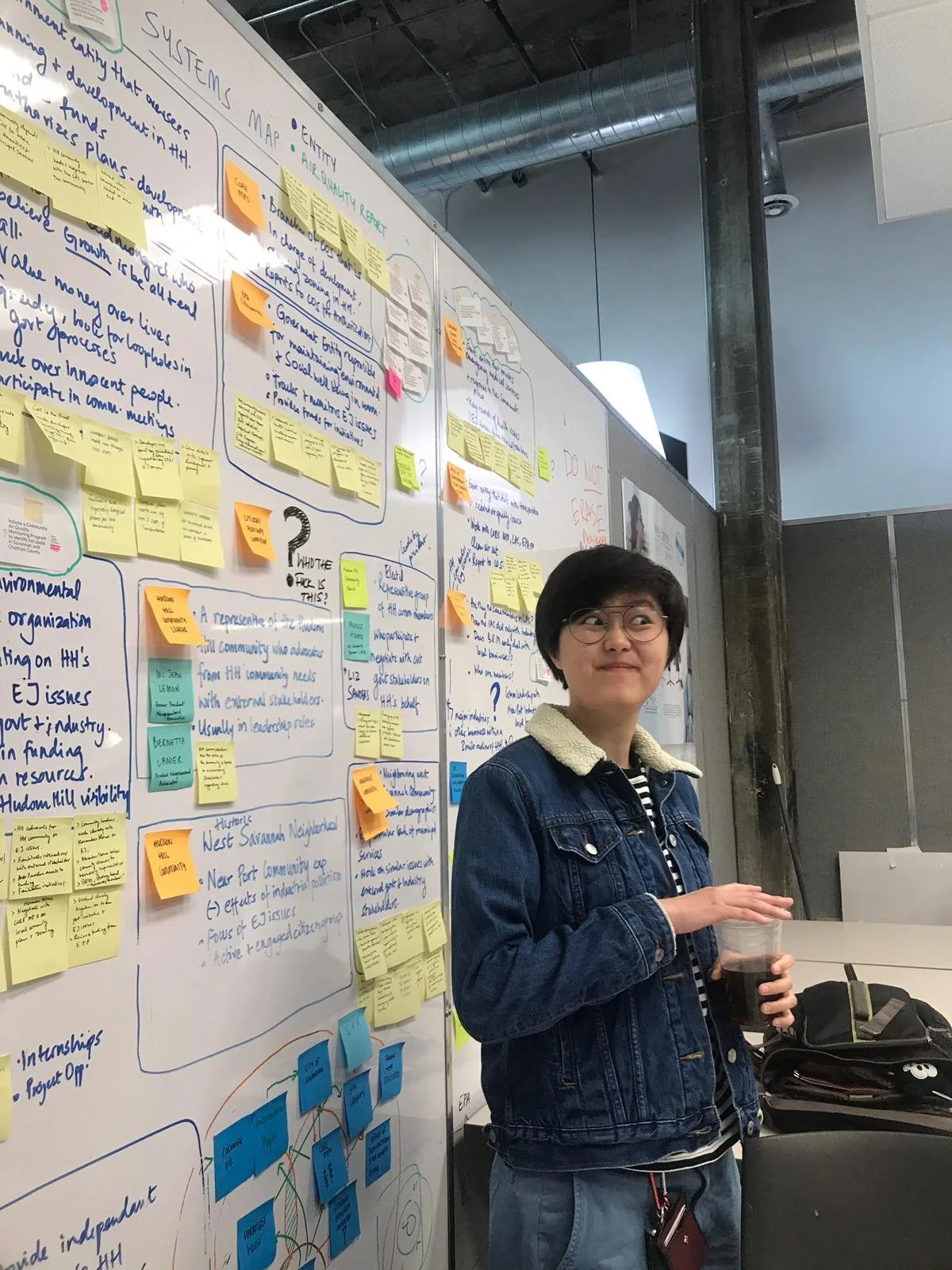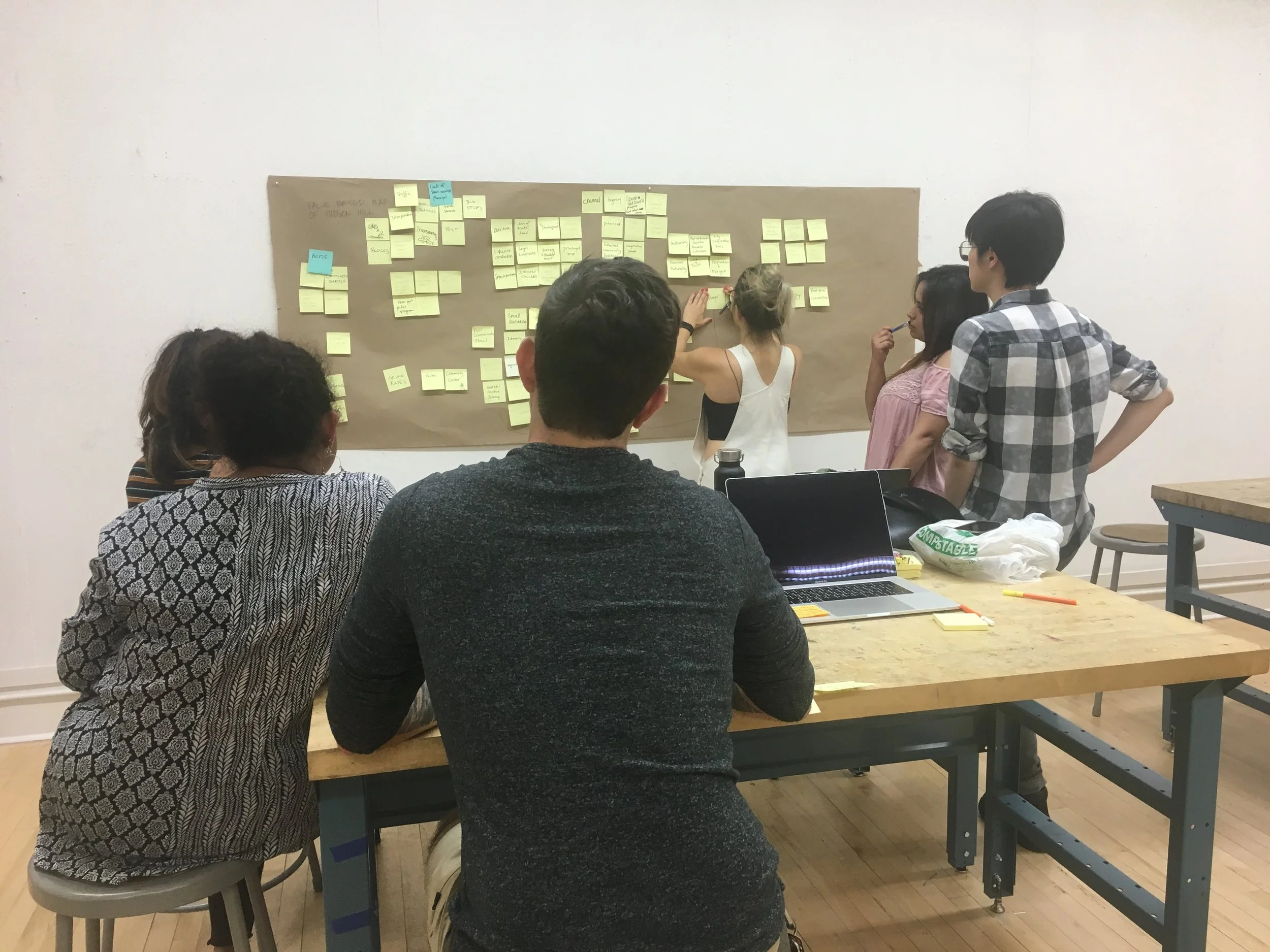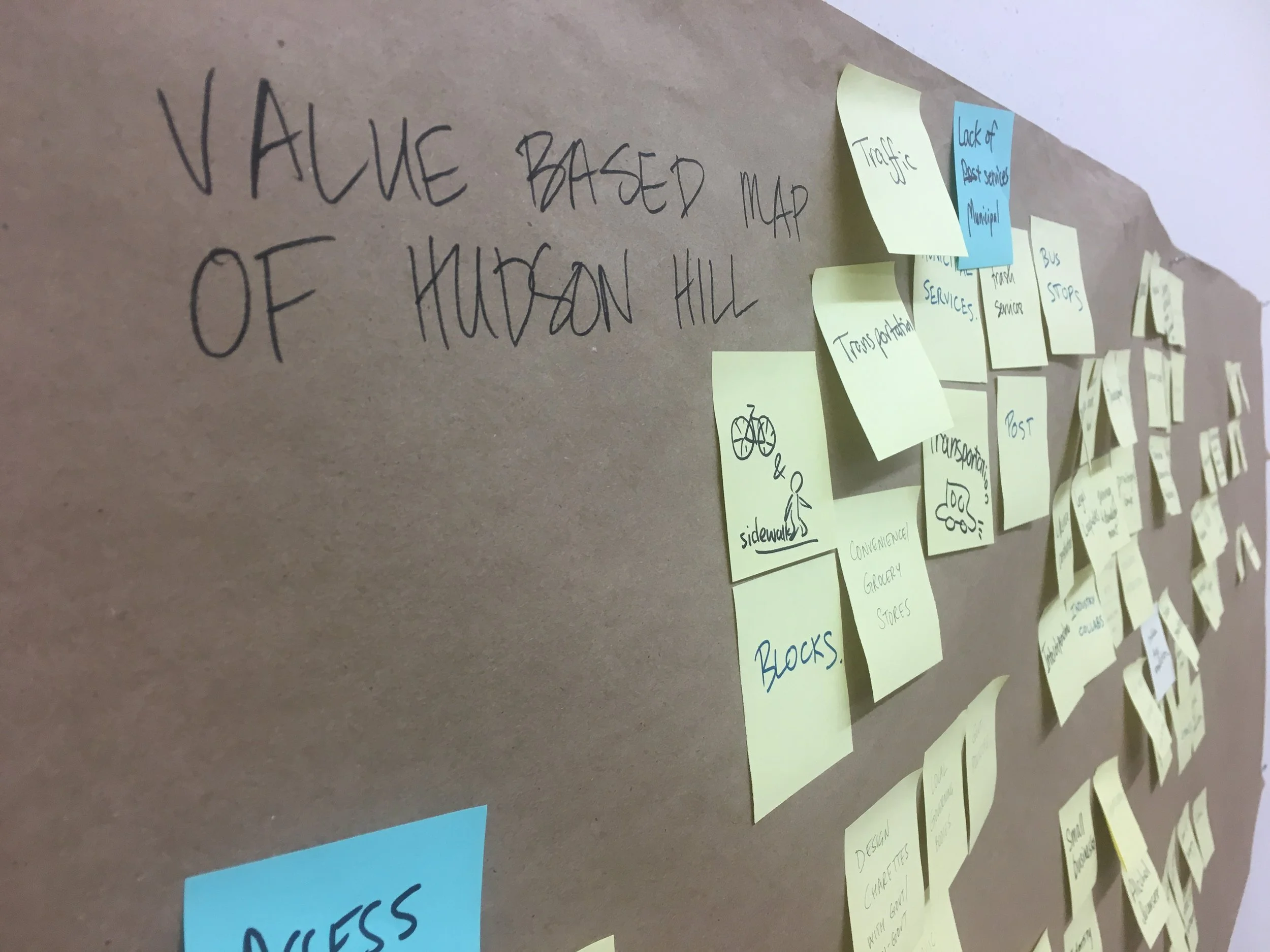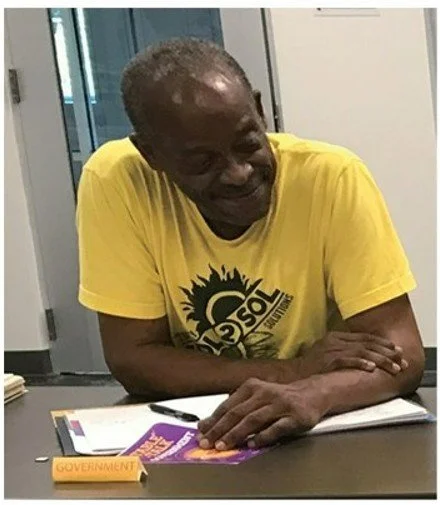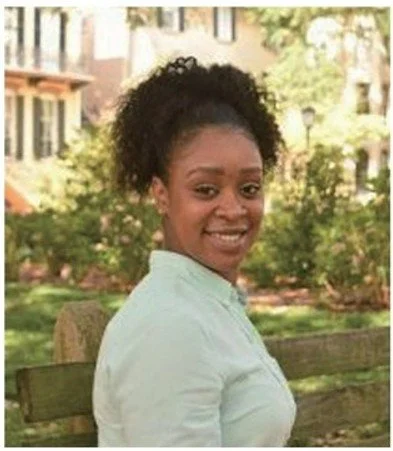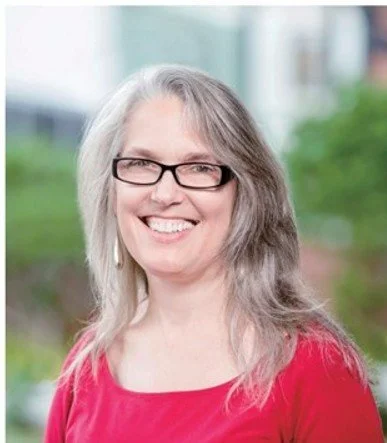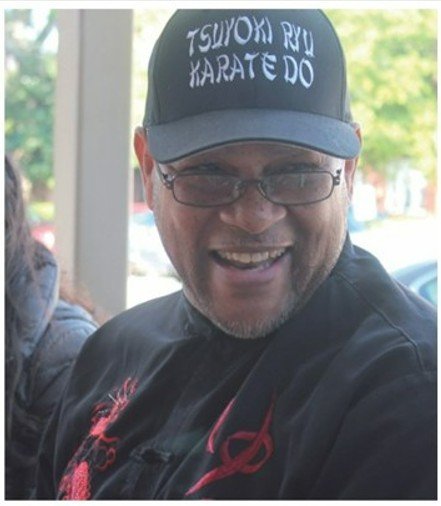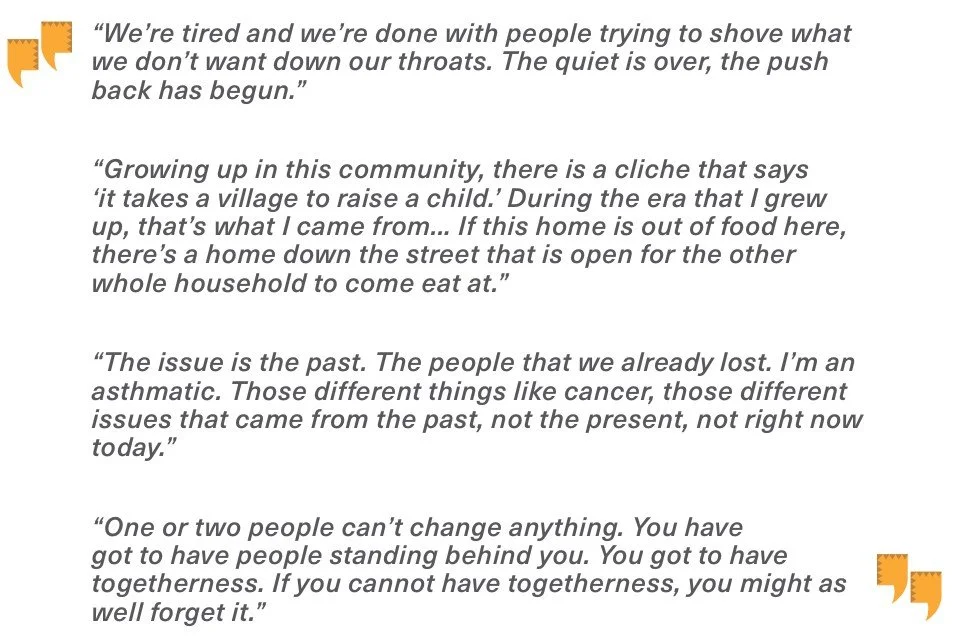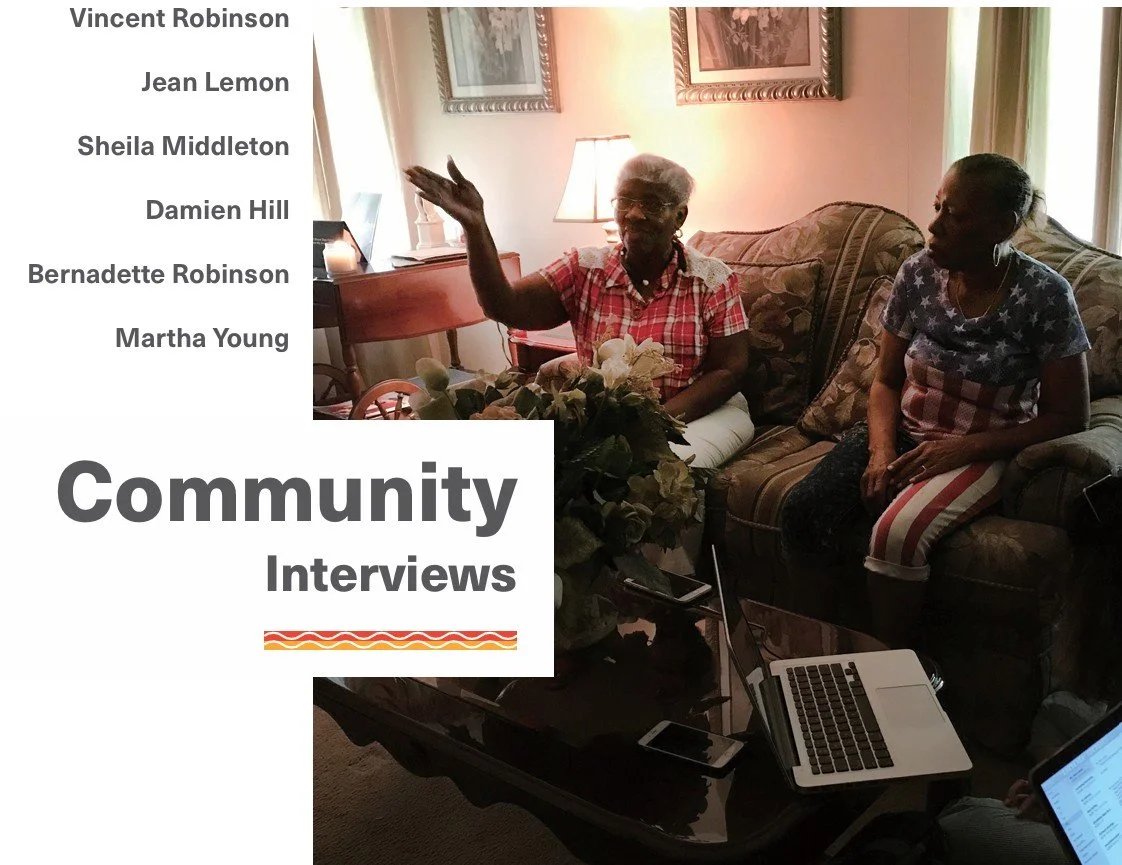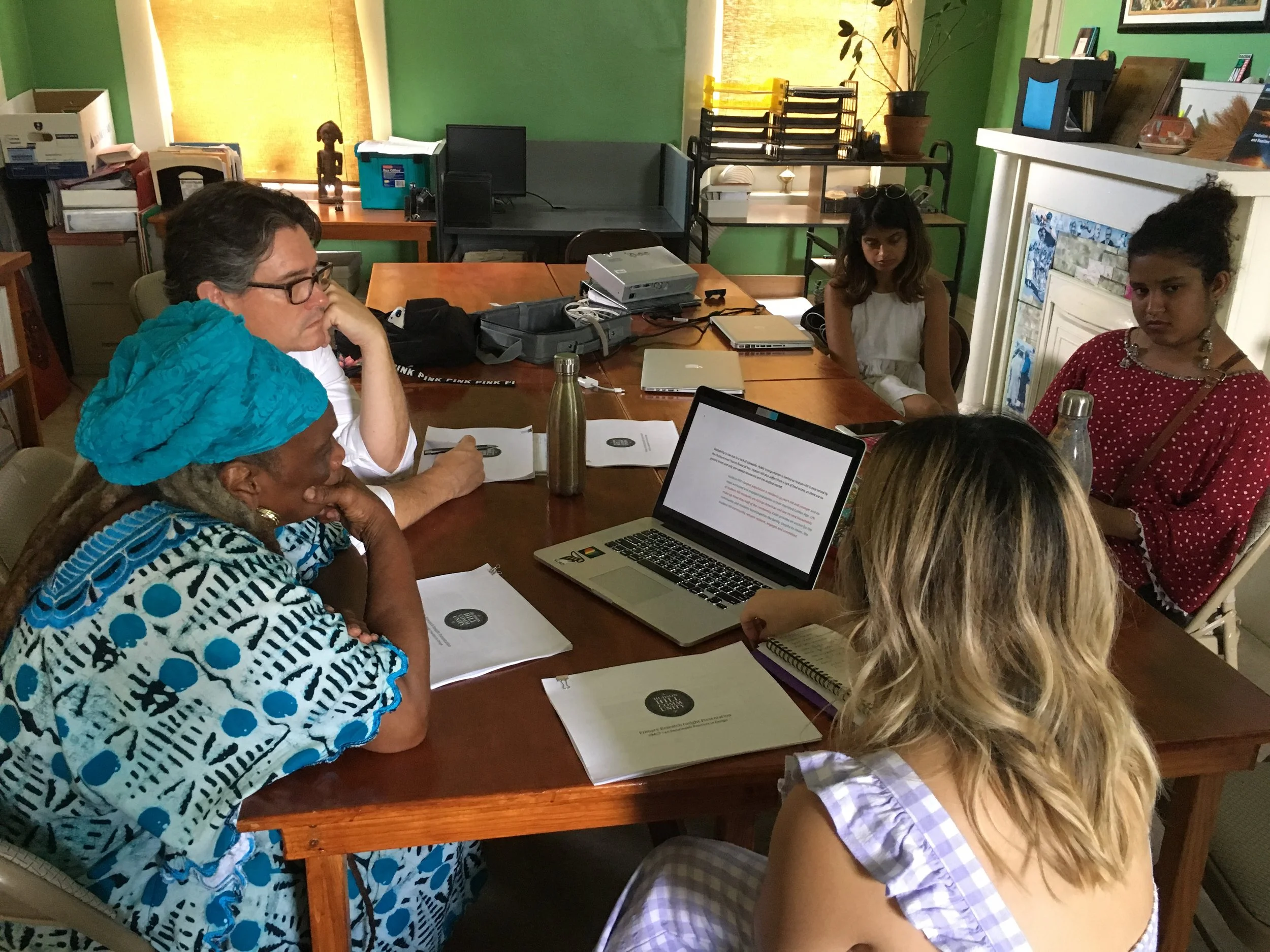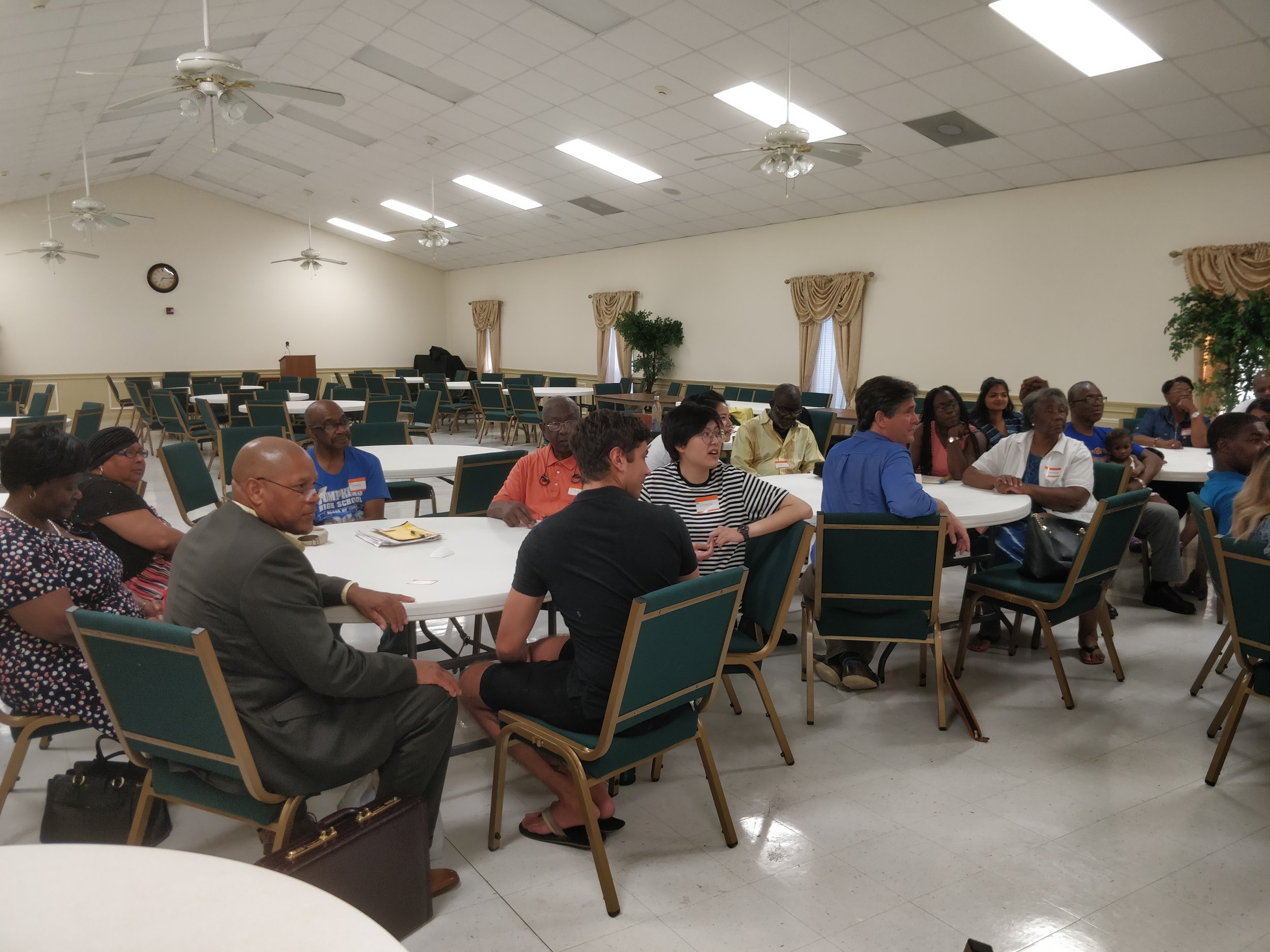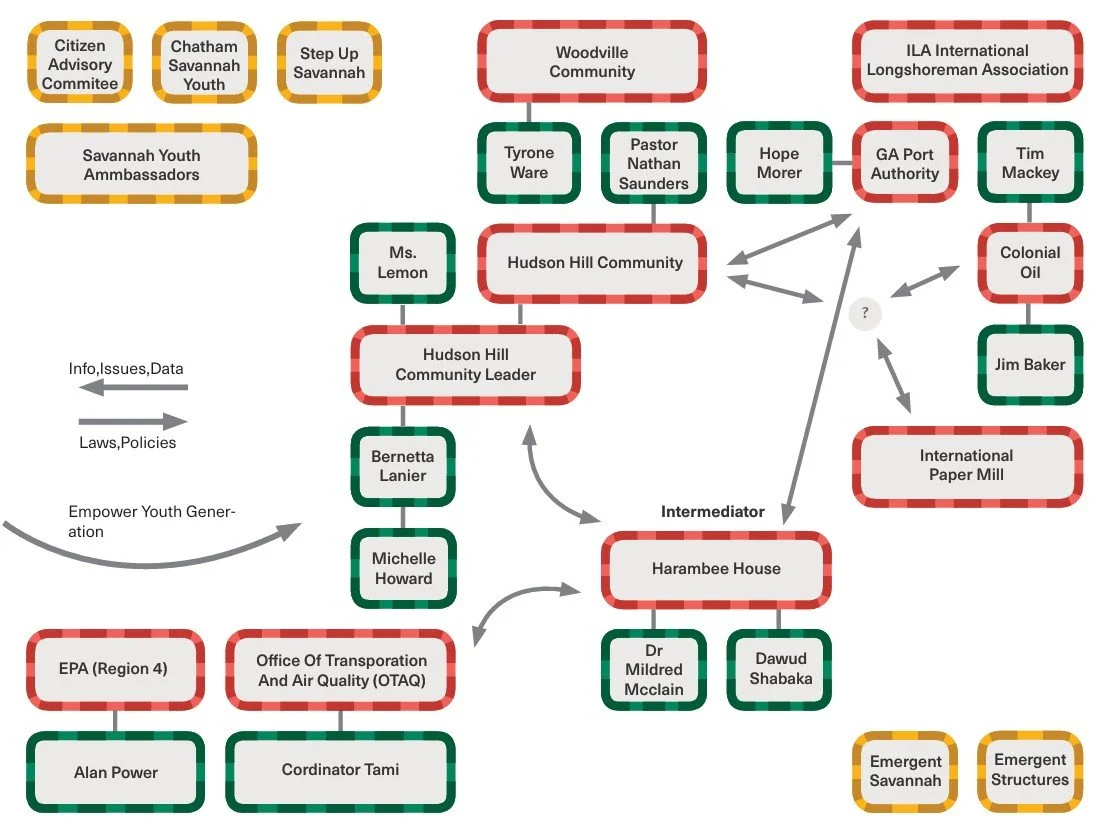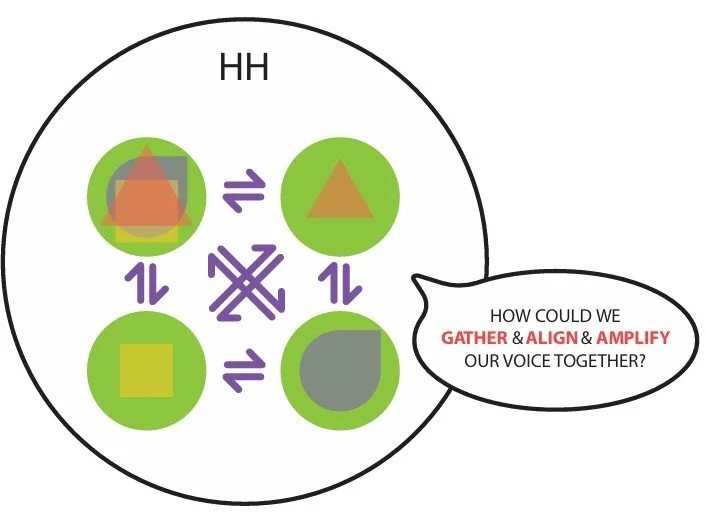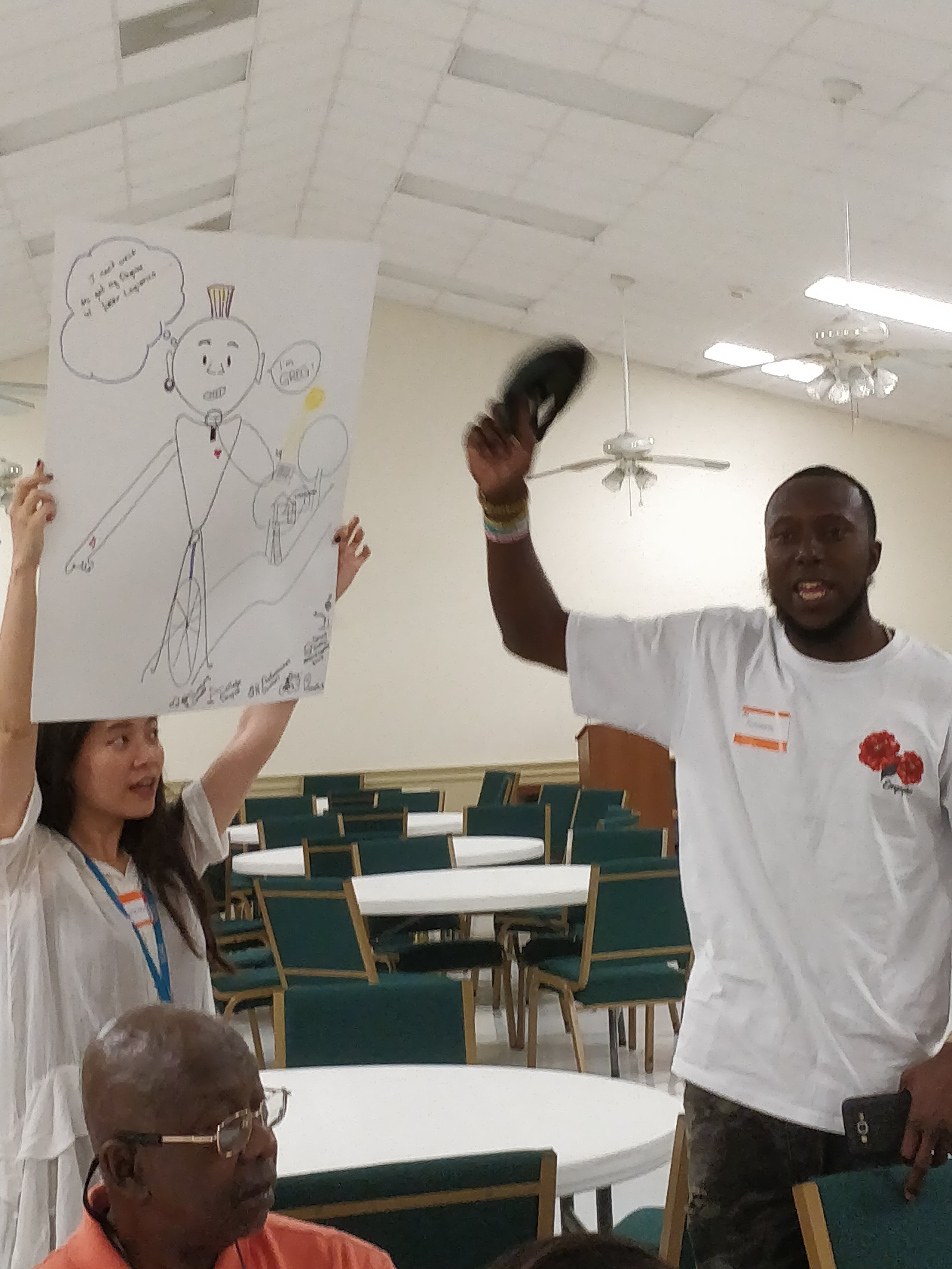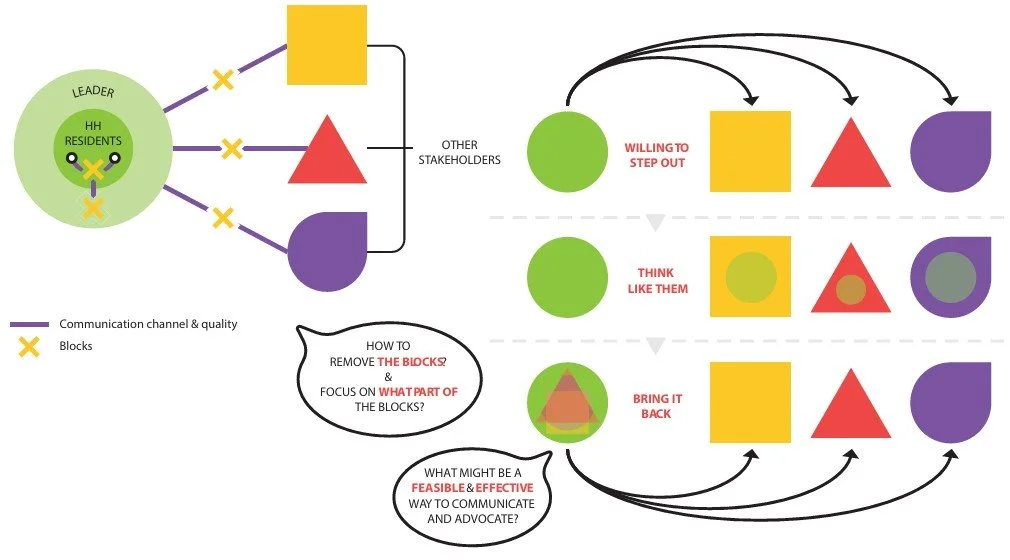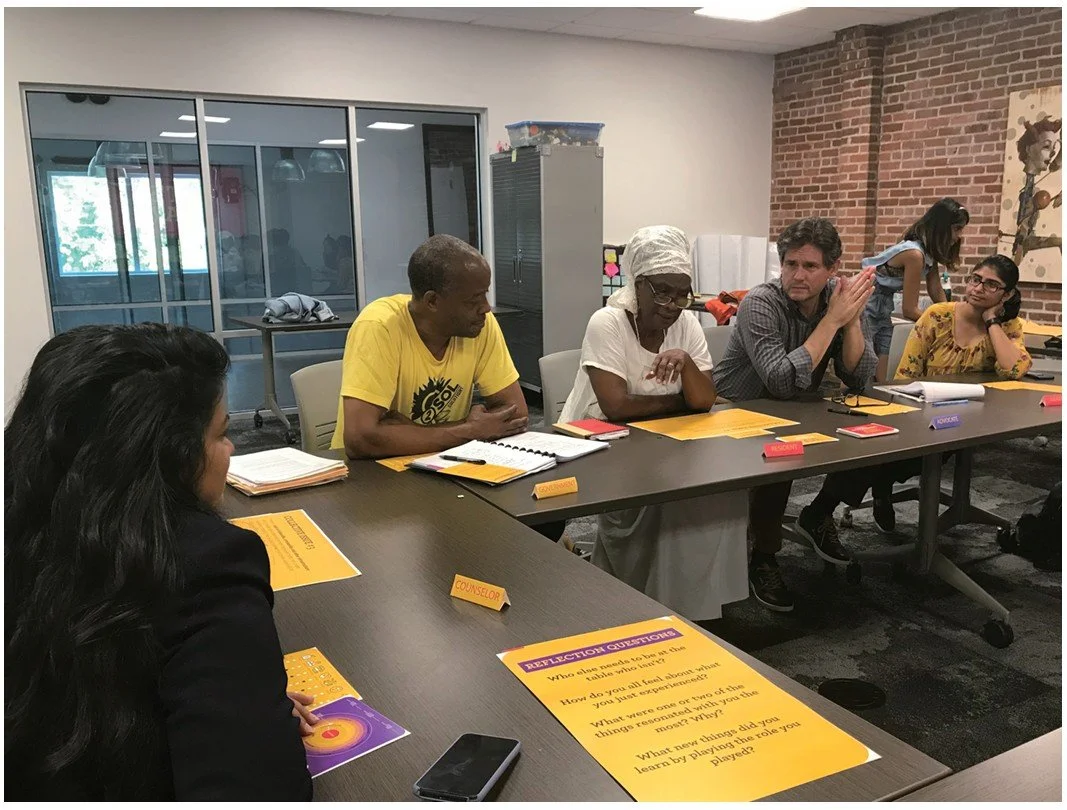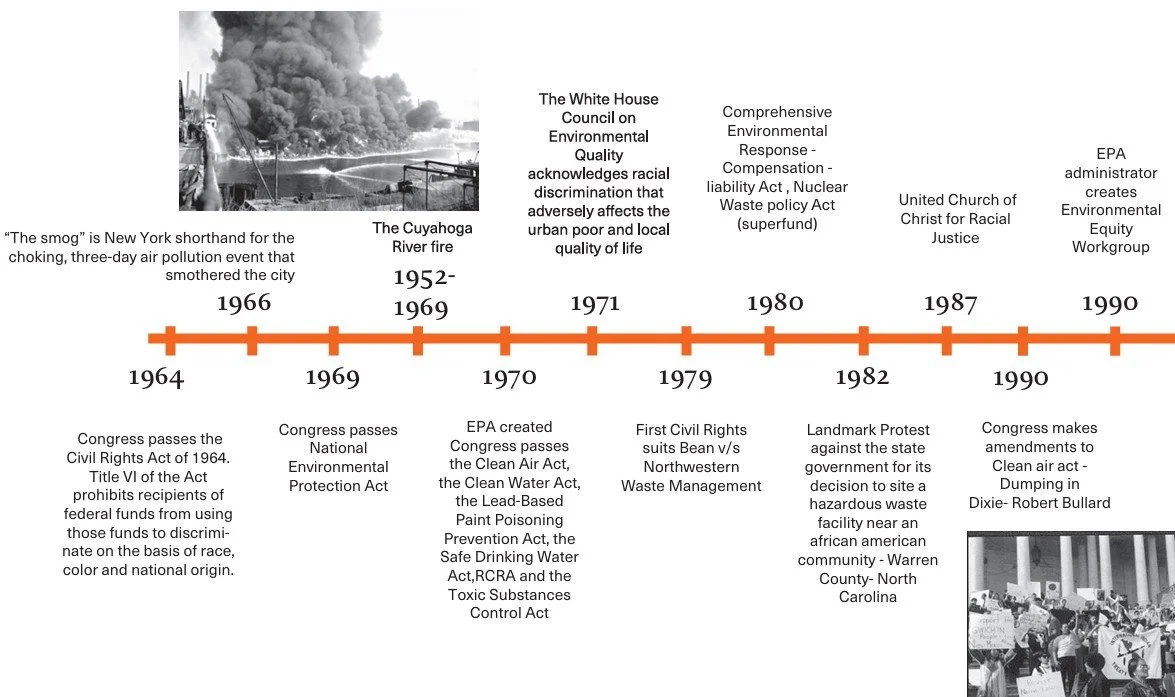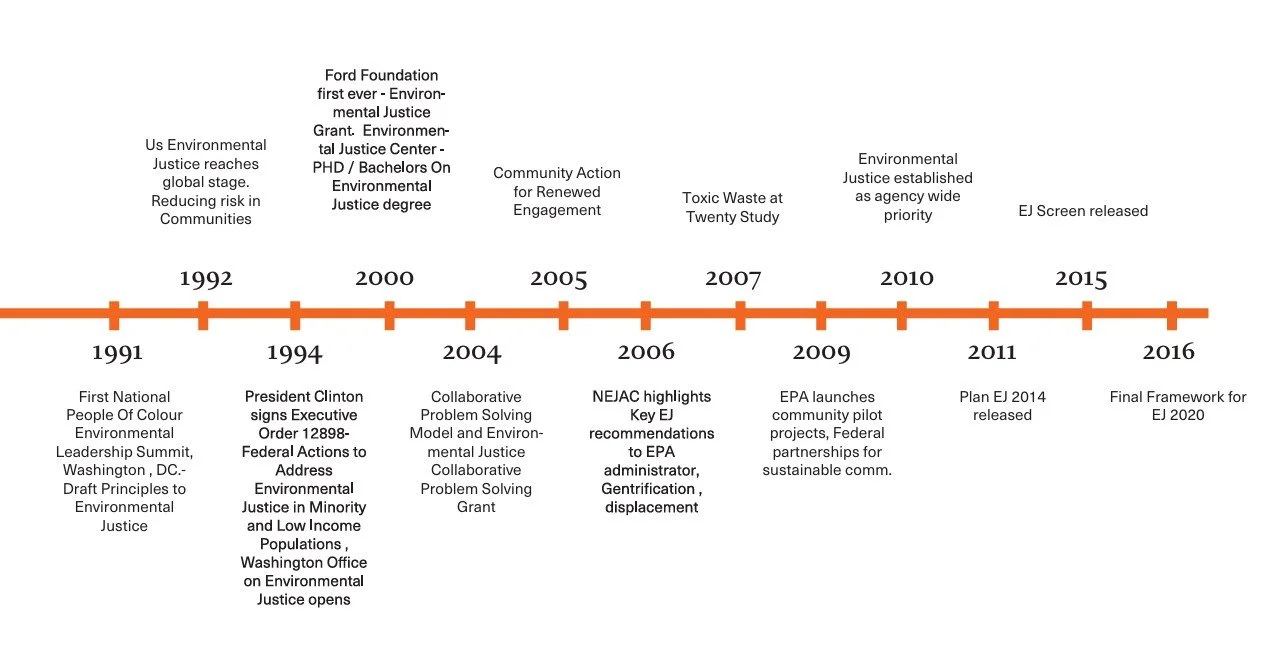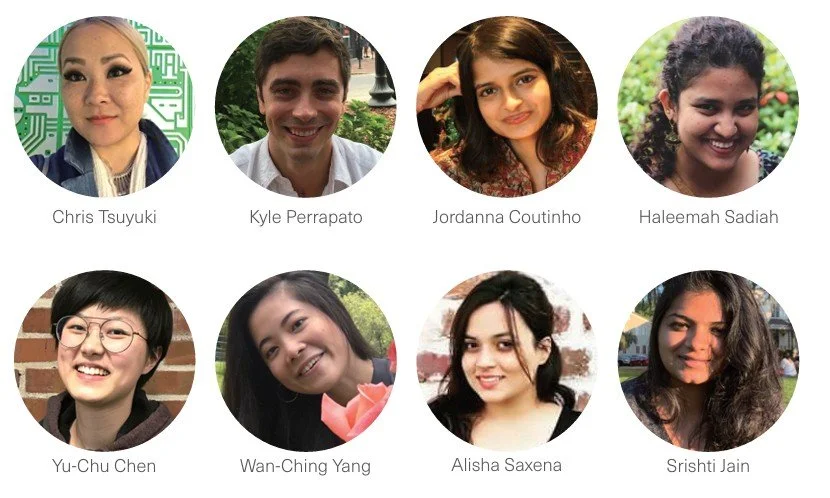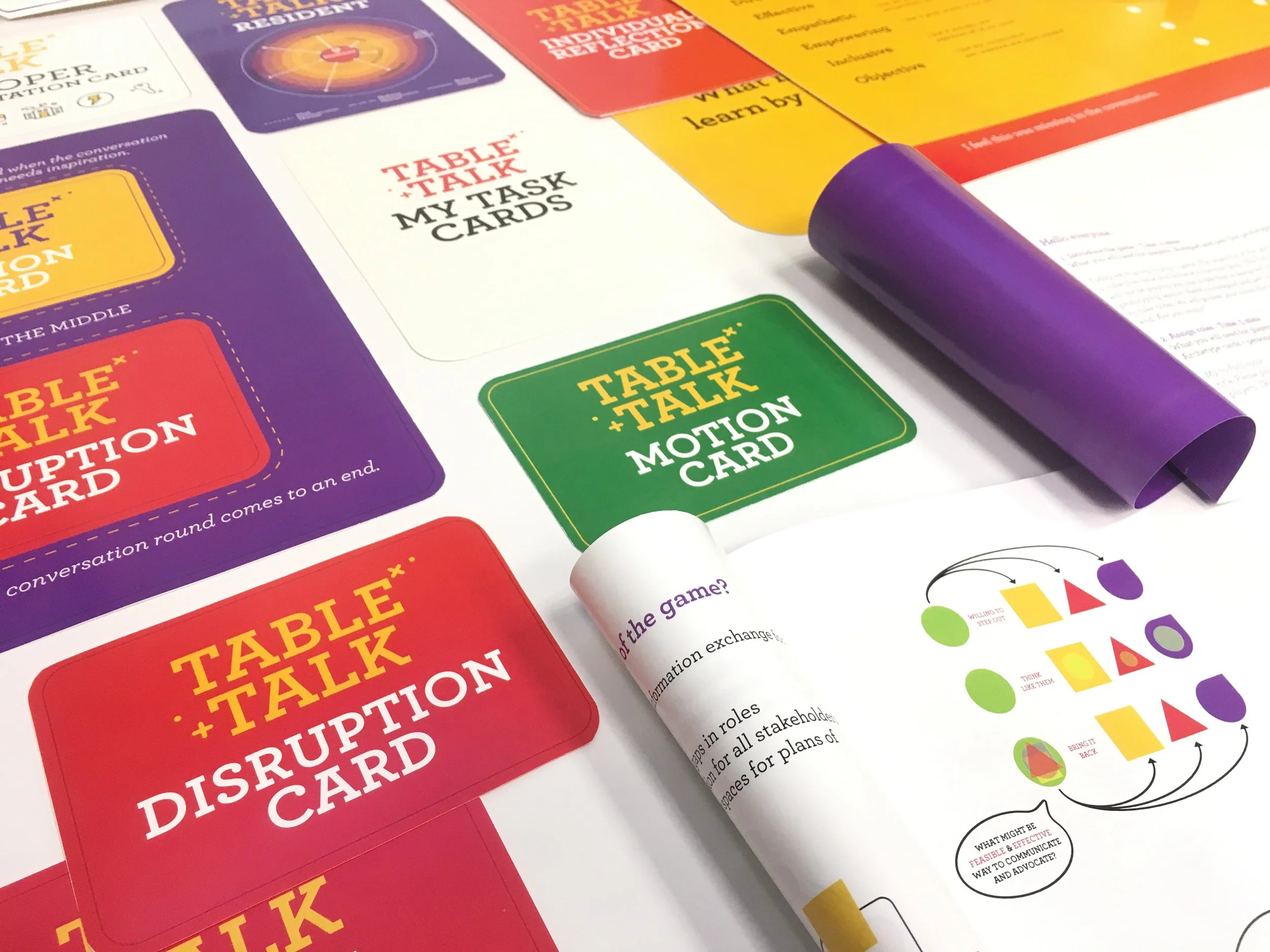
Client
Hudson Hill Township, Savannah, GA
Year
2019
Client
Harambee House: Citizens for Environmental Justice
Project Duration
10 weeks
Table Talk: A Toolkit For Facilitating Environmental Justice
Table Talk is a graduate-level community partnership project addressing environmental justice concerns, where I was responsible for research development and creating comprehensive research protocols. We synthesized community-driven findings into strategic insights, leading both the methodological design and data synthesis phases to transform complex environmental justice research into actionable recommendations for community, industry, and governmental stakeholders.
Collaborative Design for Environmental Equity
This project was undertaken to address the complex environmental justice issues facing Hudson Hill, a predominantly African American community in Savannah adjacent to the port and industrial facilities. After a decade-long gap in SCAD-community partnerships, the team collaborated with Harambee House to reconnect with Hudson Hill residents and understand their ongoing struggles with air quality, inadequate municipal services, and lack of meaningful participation in decisions affecting their neighborhood. The project aimed to develop sustainable design solutions that would empower the community and improve communication channels between residents and external stakeholders such as the Georgia Port Authority, city government, and local industries. Through extensive primary research and community engagement, the team created "Table Talk," a collaborative toolkit designed to facilitate more equitable dialogue and collective problem-solving among diverse stakeholders in the Hudson Hill ecosystem.
Harambee House:
Citizens for Environmental Justice
Harambee House is a Savannah-based nonprofit organization that identifies itself as "citizens for environmental justice." The name "Harambee" translates to "working together, pulling together, helping each other, caring and sharing." With over two decades of experience, the organization helps communities create safe, clean, healthy, and sustainable environments that promote wellness, economic wellbeing, and environmental justice. Led by Dr. Mildred McClain, Harambee House serves as a crucial intermediary between communities like Hudson Hill and external stakeholders, securing EPA grants and facilitating collaborative efforts to address environmental inequities affecting Savannah's underprivileged populations. Dr. McClain was the one to bring us on board.
What came before?
Before we could begin research or design processes, we had to understand what projects/partnerships came before. Which were effective, and which weren’t?
The Neighborhood
Learning the Place
Hudson Hill is a predominantly African American community in West Savannah with deep Gullah/Geechee cultural roots, situated at the nexus of the Savannah Ocean Port, freeways, railways, and multiple industrial facilities. The community has experienced decades of environmental justice issues, including air quality problems, inadequate municipal services, and exclusion from decision-making processes that directly affect their neighborhood. Despite facing ongoing challenges from industrial pollution and systemic neglect, Hudson Hill remains a resilient, faith-centered community whose residents are committed to advocacy and collective action for their neighborhood's future.
Learning the People
To gain a deeper understanding of the complex stakeholder ecosystem surrounding Hudson Hill, we conducted extensive interviews with community leaders, residents, government officials, industry representatives, and academic liaisons. Many individuals were interviewed multiple times at different stages of the project, allowing us to build trust, verify insights, and track evolving perspectives as our understanding of the community's needs developed.
Dr. Mildred McClain “Doc”
Executive Director at Harambee House, Environmental justice promoter
Dawud Shabaka
65 years old, Staff at Harambee House, Community organizing auxiliary, and advocate
Rebecca Elias
30 years old, Community Outreach Coordinator at City of Savannah
Michelle Greene Howard “Niecey”
47 years old, Secretary of Hudson Hill Neighborhood Association, Leader of Internal Environmental Justice Group
Julie Varland
63 years old, Professor at SCAD, Community liaison between SCAD and Savannah communities
Reverend Nathan Saunders
57 years old, Pastor of Friendship Baptist Church, Community leader, and organizer
Bernadette Bryant Lanier
President of Hudson Hill Neighborhood Association, Leader of community development
Nick Deffley
Director of the Office of Sustainability in the City of Savannah
Hope Moorer
53 years old, General manager at Georgia Port Authority, GPA contact person for Hudson Hill
Additional Community Interviews
Key Insight Development
Environmental Health Crisis
Residents are extremely concerned with industrial emissions from International Paper, Colonial Oil, and port operations leading to childhood asthma and increasing cancer occurrences
Community experiences paint peeling off houses and cars, debris in the air, and strange smells
Development and Gentrification Concerns
Very aware of external encroachment by developers and interested parties on their community's land
Some development seen as inevitable, but residents want an equitable place and share in the neighborhood's future
Good Neighbors, Not Equitable Partners
Georgia Port Authority and surrounding industries believe they are being good neighbors through meeting attendance and small donations, but residents want to be in a truly equitable partnership
Harambee House has secured multiple EPA grants over 15 years to address industry impacts on Hudson Hill
Infrastructure and Service Gaps
Low walkability due to lack of sidewalks and limited public transportation (only Route 3B with minimal amenities)
Lack of food access - no grocery stores, only one takeout restaurant and seafood market, yet eight businesses have liquor licenses
Youth Engagement Gap
Hudson Hill's largest population is residents 34 years old and younger, but this isn't reflected in community leadership
Unclear whether lack of engagement is due to time limitations (youth leaving for work/education) or disinterest
Community Resilience Despite Challenges
The community has experienced unstable leadership with each change resetting momentum, but residents continue to show up despite growing fatigue
Community resilience is strong because Hudson Hill looks out for each other like family
A Seat at the Table
Hudson Hill demands meaningful involvement in decision-making and planning that affects their community, and to be informed on direct and indirect impacts
In response to slow progress, Hudson Hill is forming its own internal environmental justice group to carry forward Near-Port Pilot Program goals
Frustrated with Past Interventions
Community expressed repeated concerns over influx of external 'help' with corresponding lack of recommendations, deliverables and actions
Previous community action plan seen as reductionist, with results taken broadly as tokenism
The community interviews revealed powerful insights that fundamentally shifted our design direction, with residents expressing "We're tired and we're done with people trying to shove what we don't want down our throats" and that "You have got to have people standing behind you" for real change. These quotes highlighted the need for collective action and authentic community agency, leading us to map the complex stakeholder ecosystem rather than impose top-down solutions. The interviews revealed that issues weren't just about environmental pollution, but about power dynamics and communication breakdowns—insights that directly informed our development of Table Talk as a tool for facilitating more equitable multi-stakeholder dialogue.
Mapping the System
It became clear that we were working with a burnt-out community at the fulcrum of complex/wicked problems. With the high number of stakeholders, information flows were muddied or non-existent. So we set out to visually map the system.
Co-Creating a Solution
Co-creation was essential to our design process because Hudson Hill residents had experienced repeated frustrations with external interventions that failed to deliver meaningful results or include their voices in decision-making. Rather than designing solutions for the community, we embedded ourselves within Hudson Hill through regular church attendance, community meetings, and collaborative workshops to ensure that residents were true partners in identifying problems and developing responses. This co-creative approach not only produced more relevant and culturally appropriate solutions like the Table Talk toolkit but also built the trust and relationships necessary for sustainable community partnerships that extend beyond any single academic project.
The Toolkit
Our design solution is "Table Talk," a multi-stakeholder toolkit that uses roleplay interaction, collaborative problem solving, and generative communication to build effective dialogue between Hudson Hill residents and external stakeholders. The toolkit includes character archetype cards based on primary research, collective issue cards, disruption cards that introduce real-world complications, and motion cards to keep conversations productive when participants reach impasses. Players assume roles of different stakeholders (residents, government officials, industry representatives, advocates) to work through community issues while building empathy and understanding across different perspectives. The game concludes with individual and group reflection cards that assess the quality of collaboration and potential for moving forward with proposed solutions. Table Talk was designed to be facilitated by community organizations like Harambee House to promote more equitable partnerships and decision-making processes in Hudson Hill's ongoing environmental justice efforts.
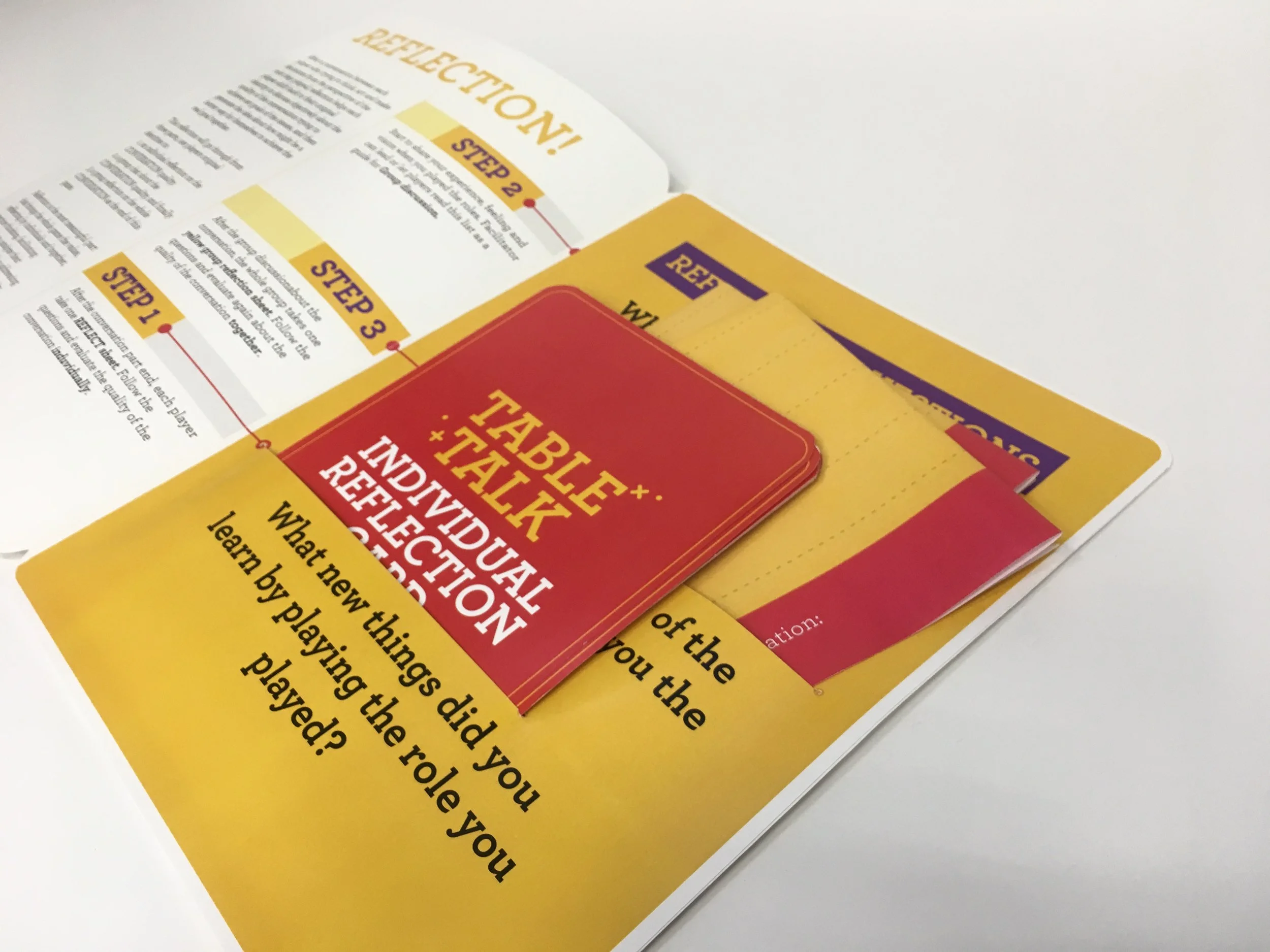
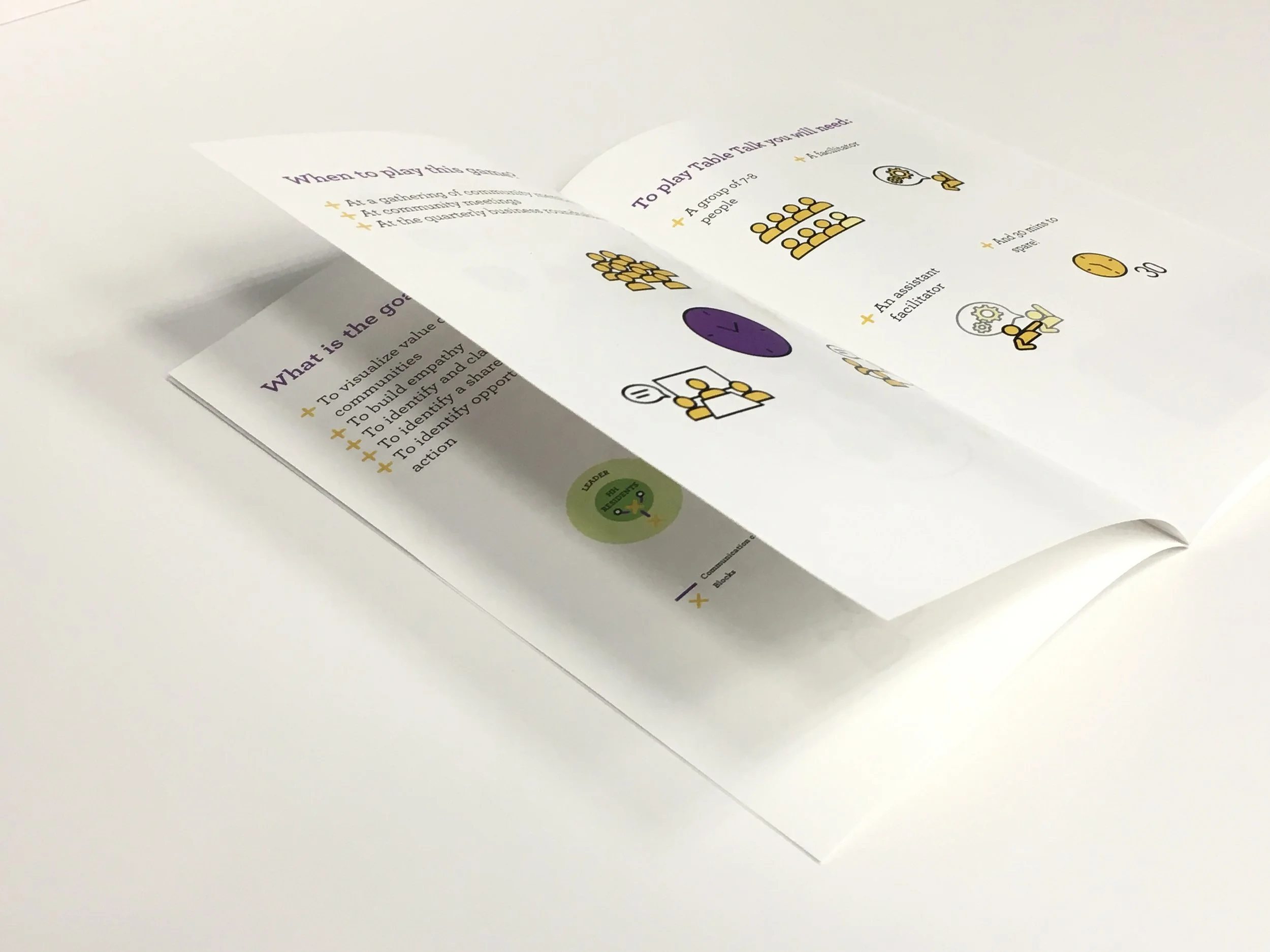
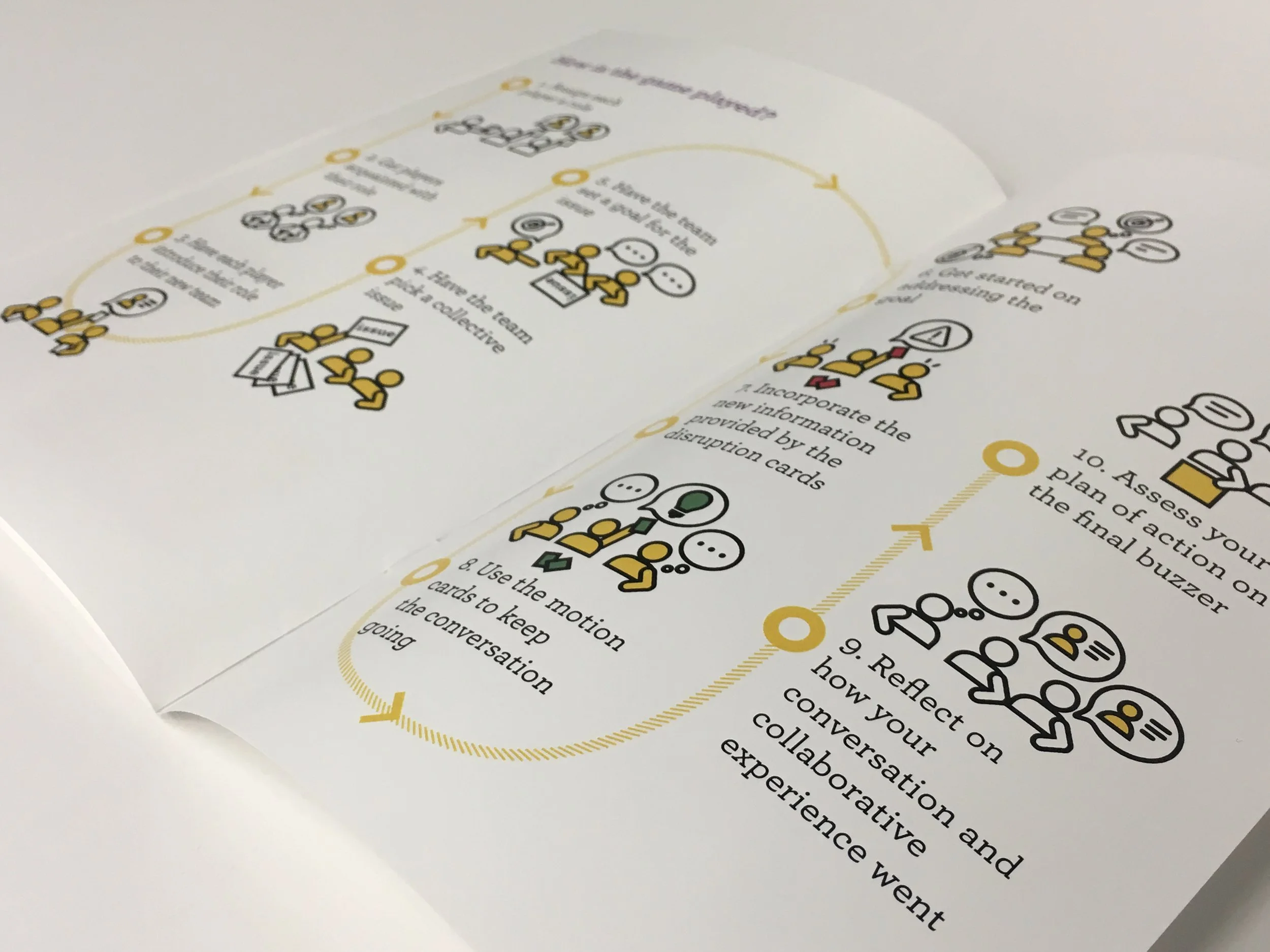
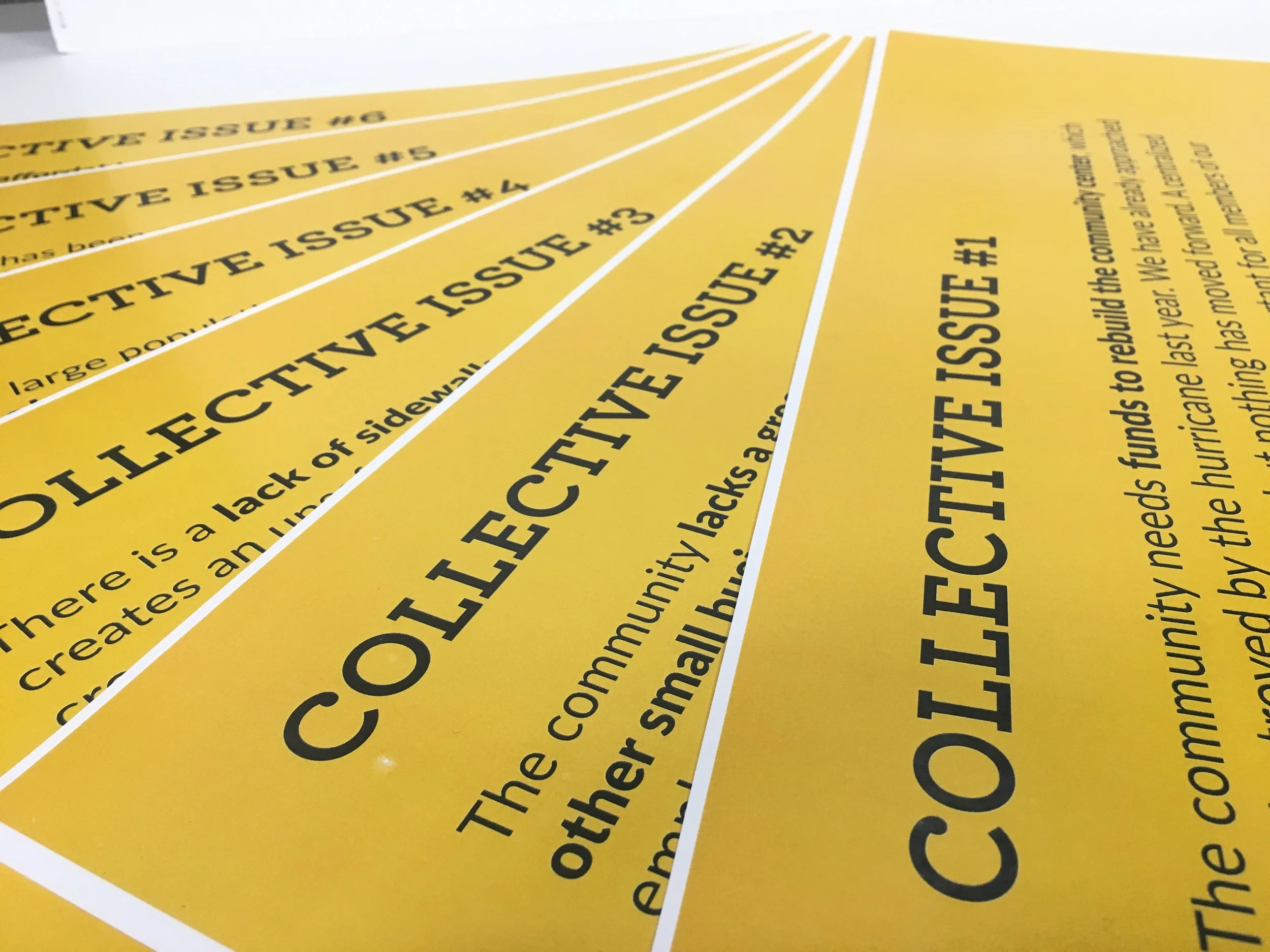
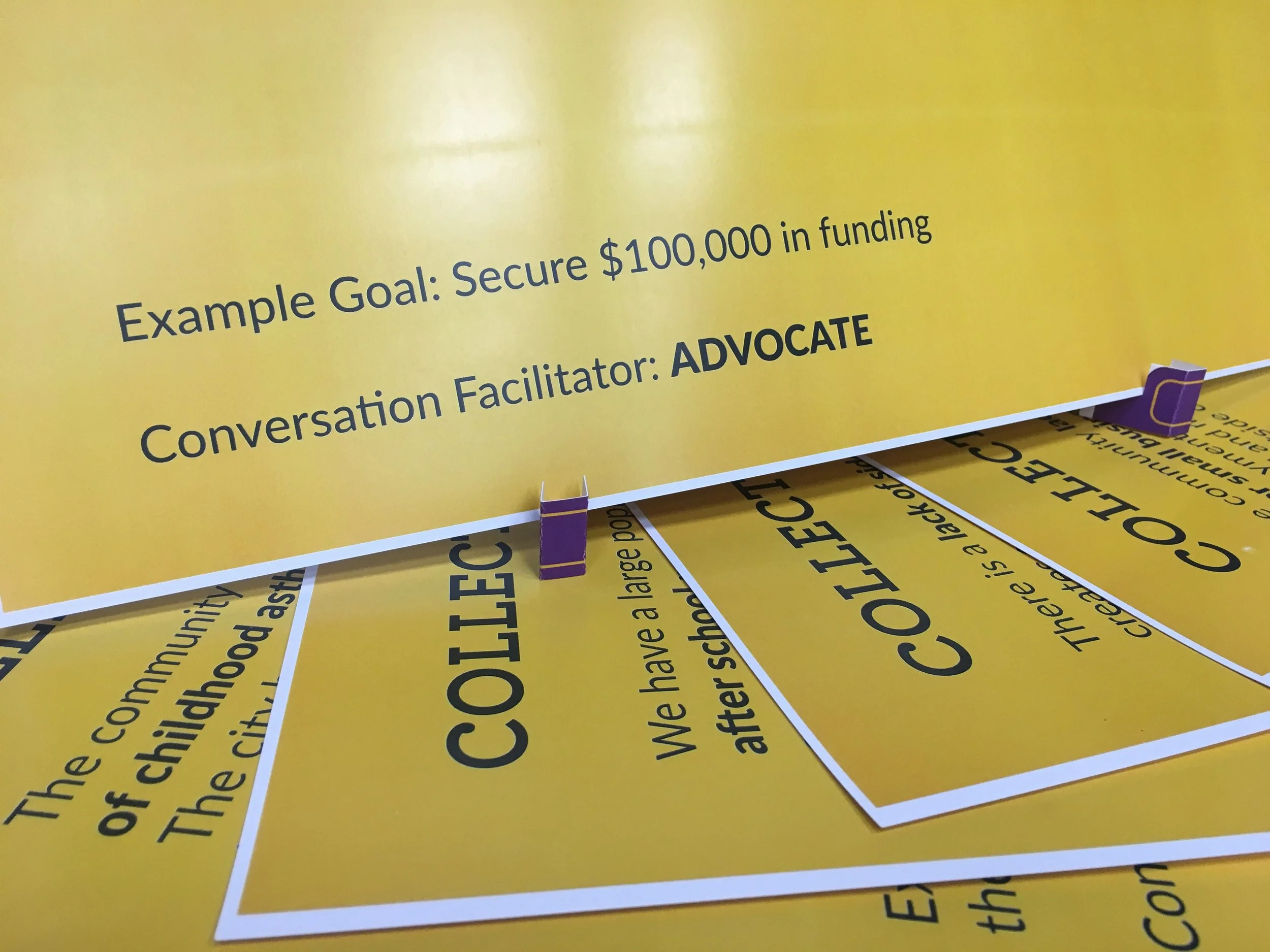
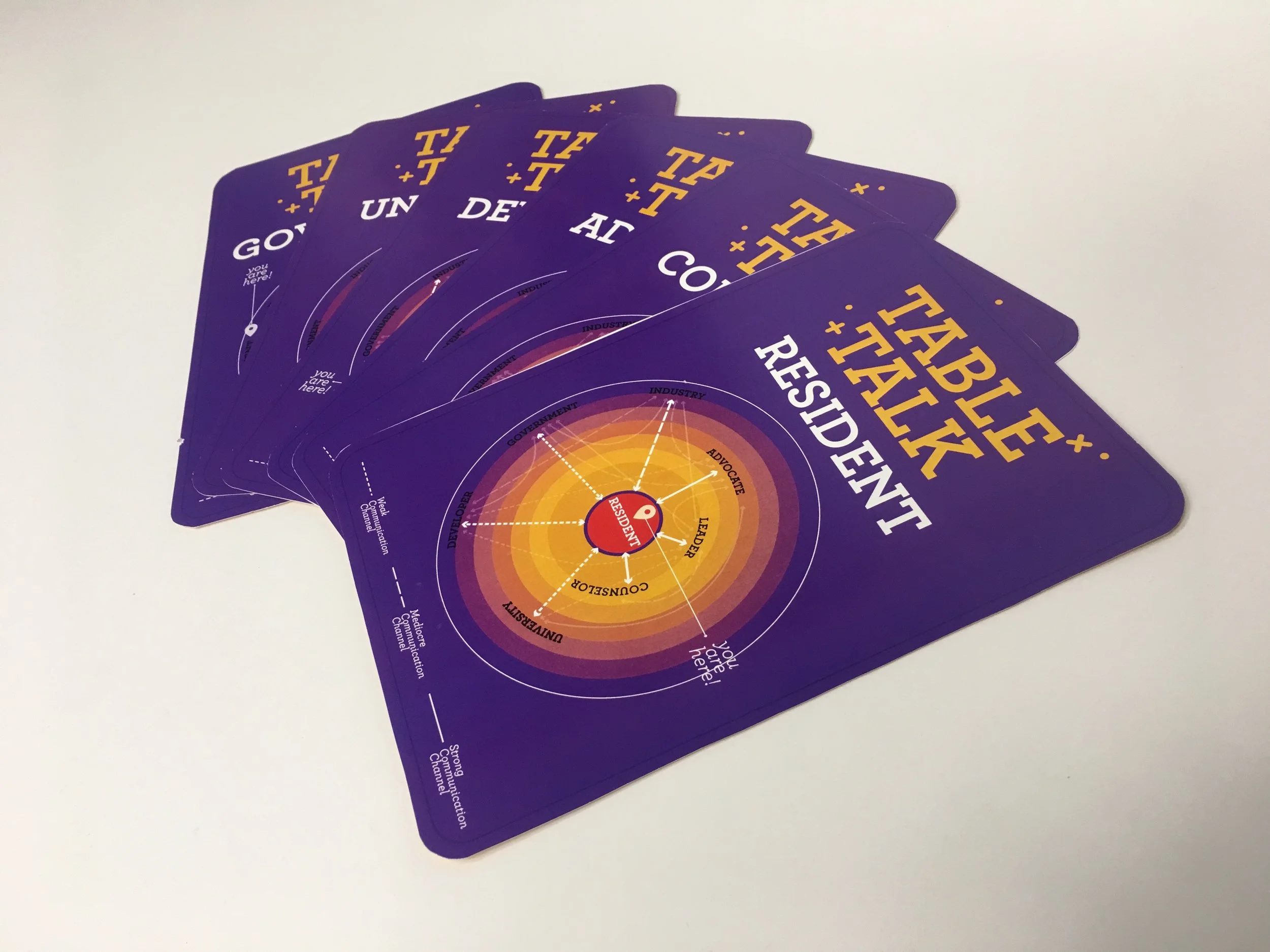
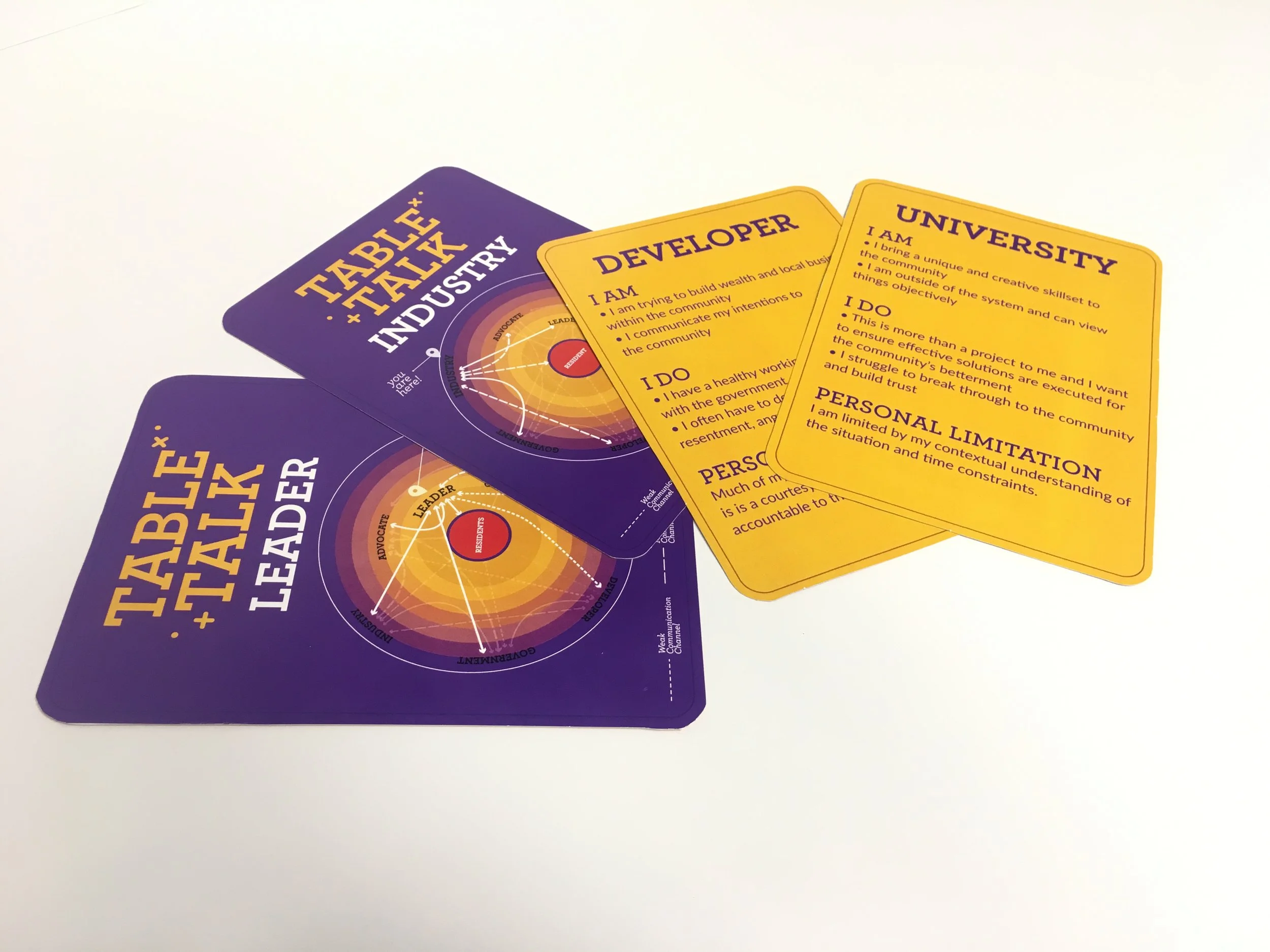

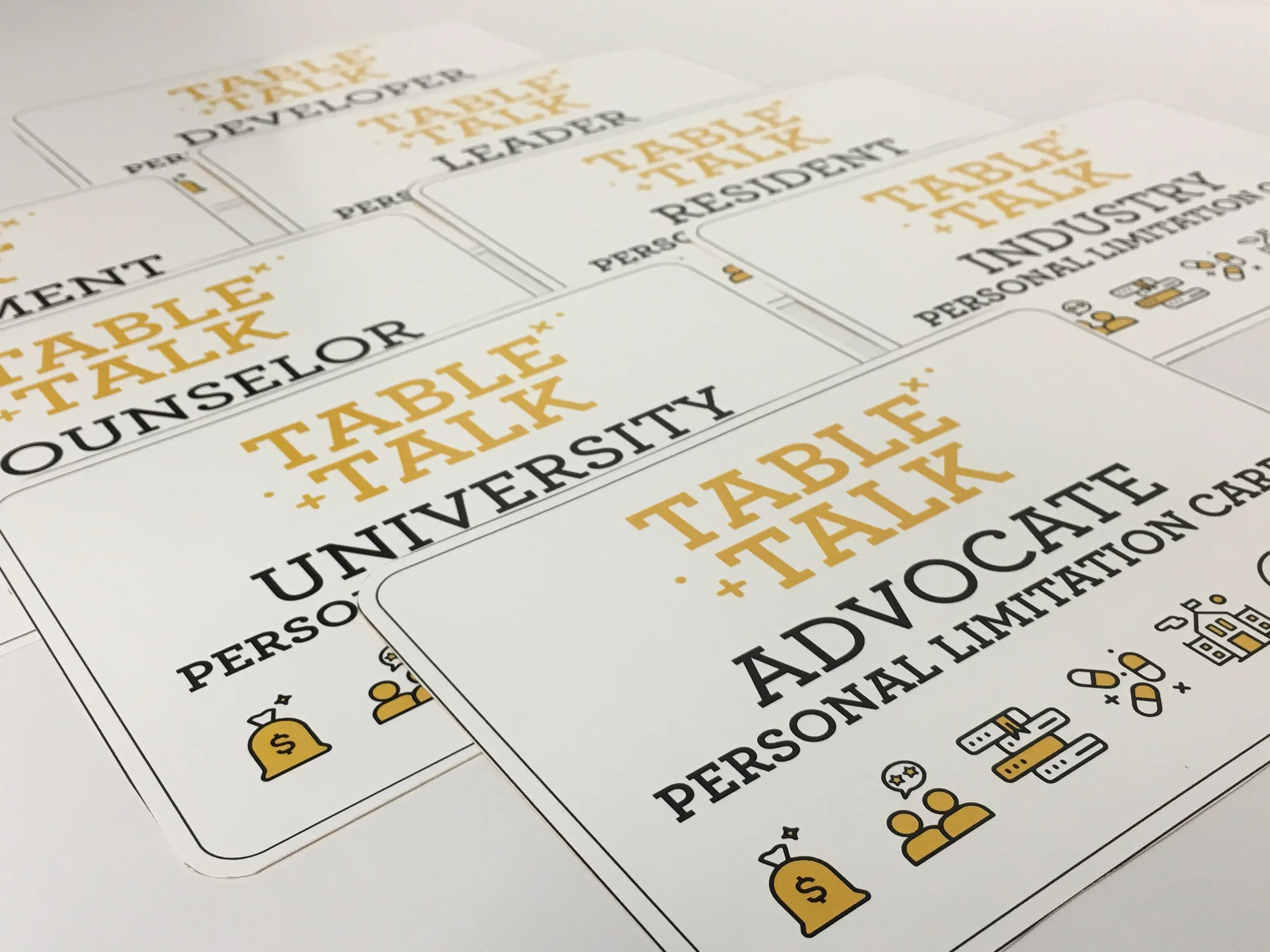
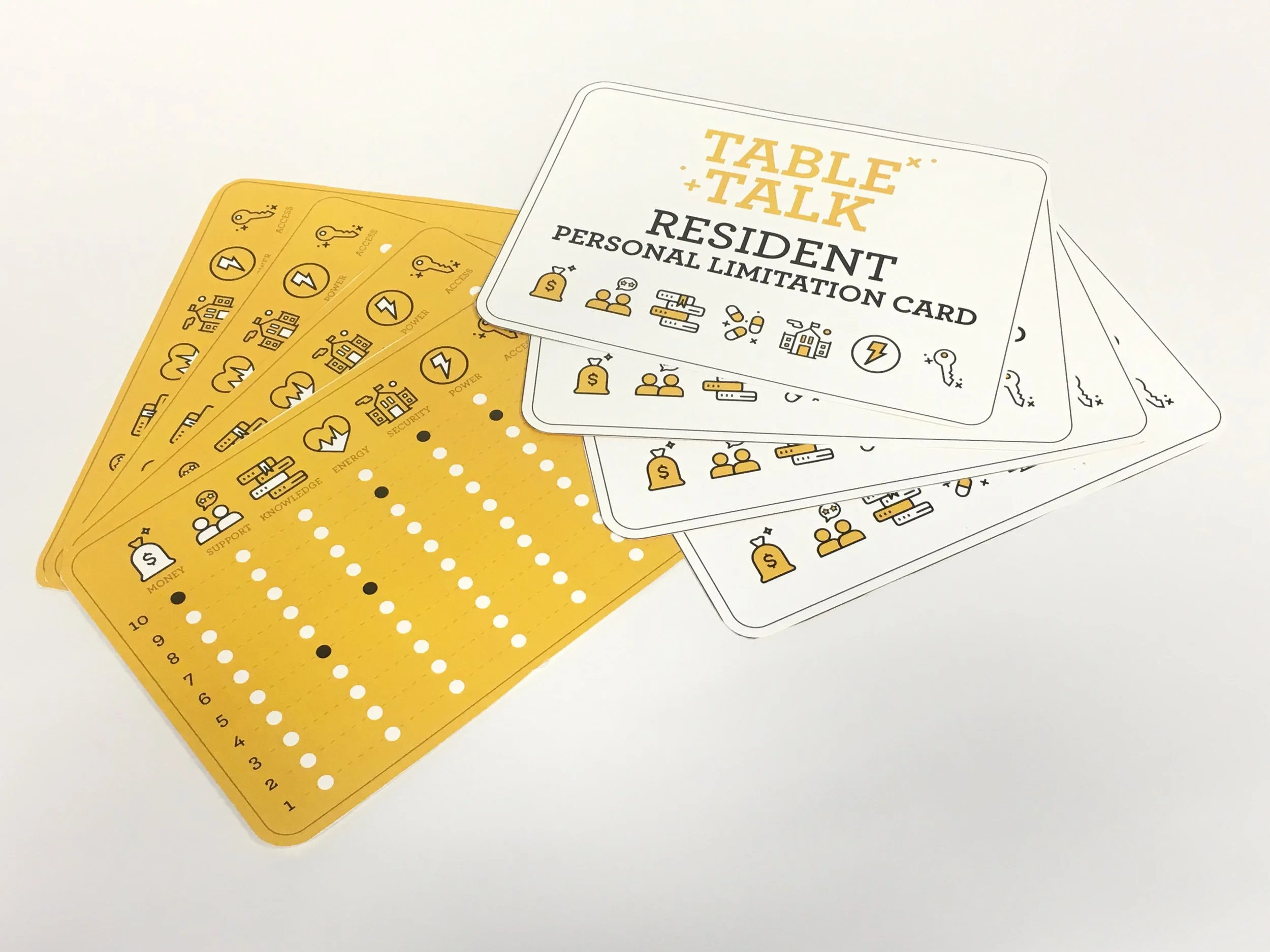
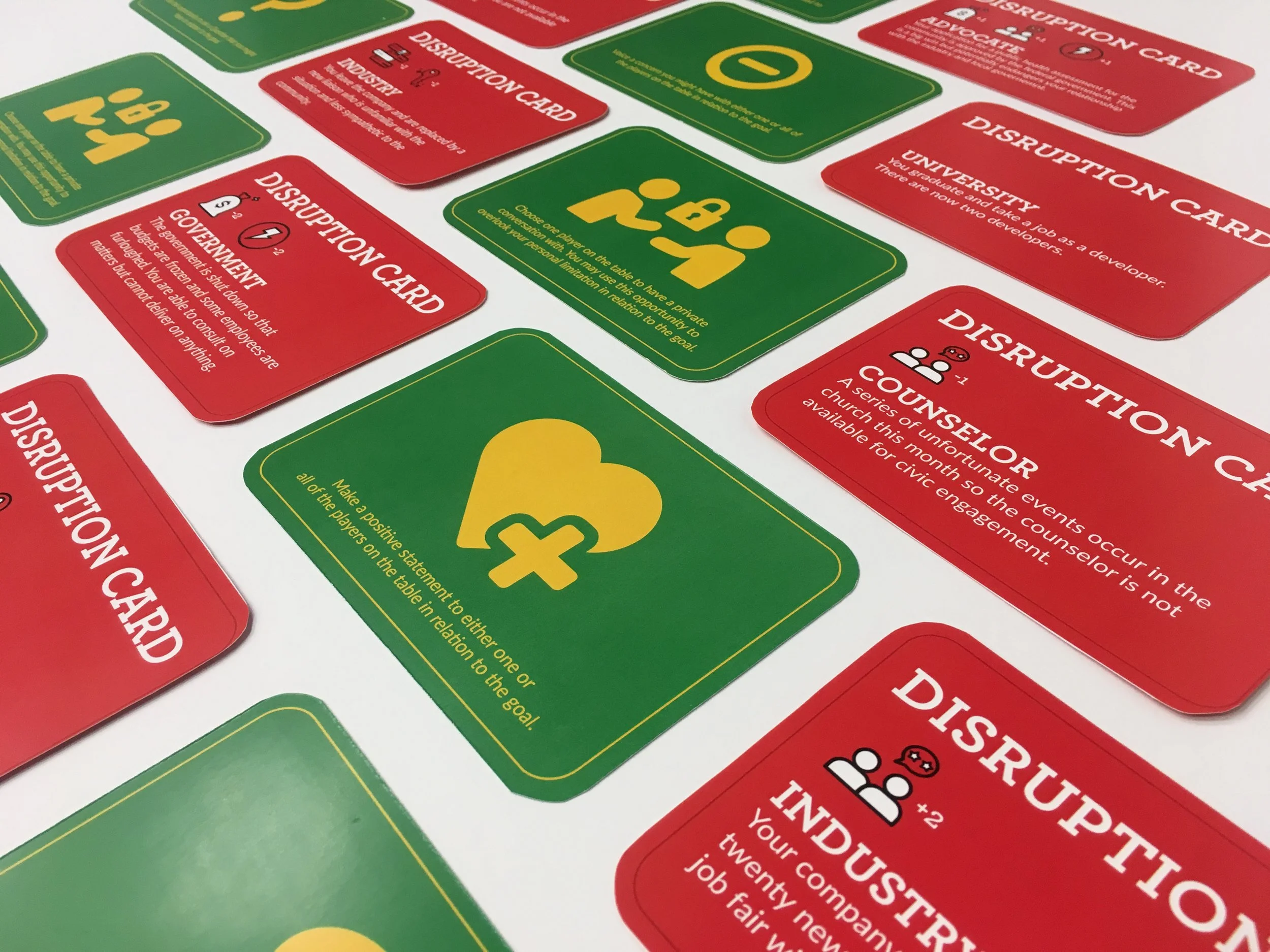
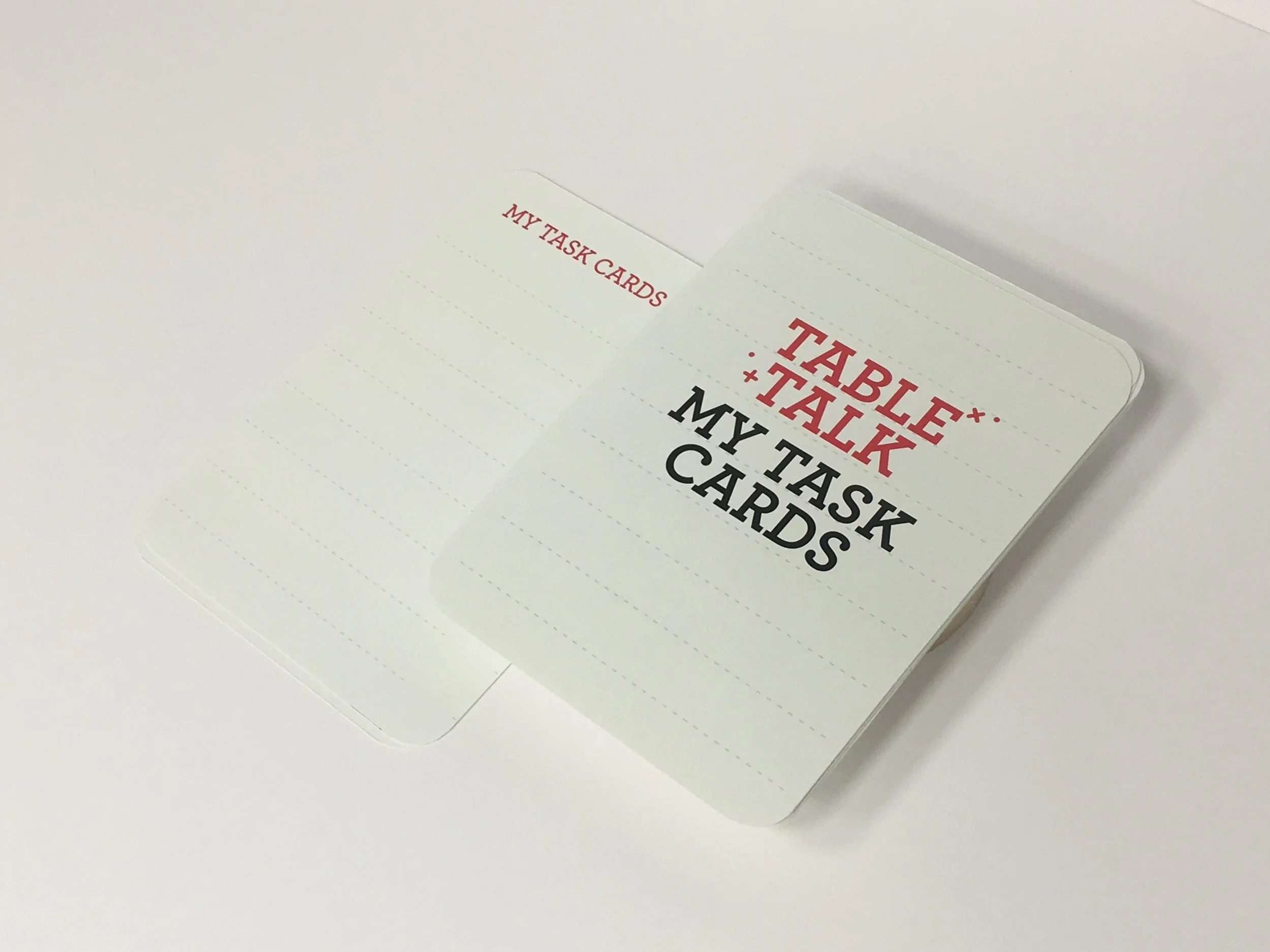

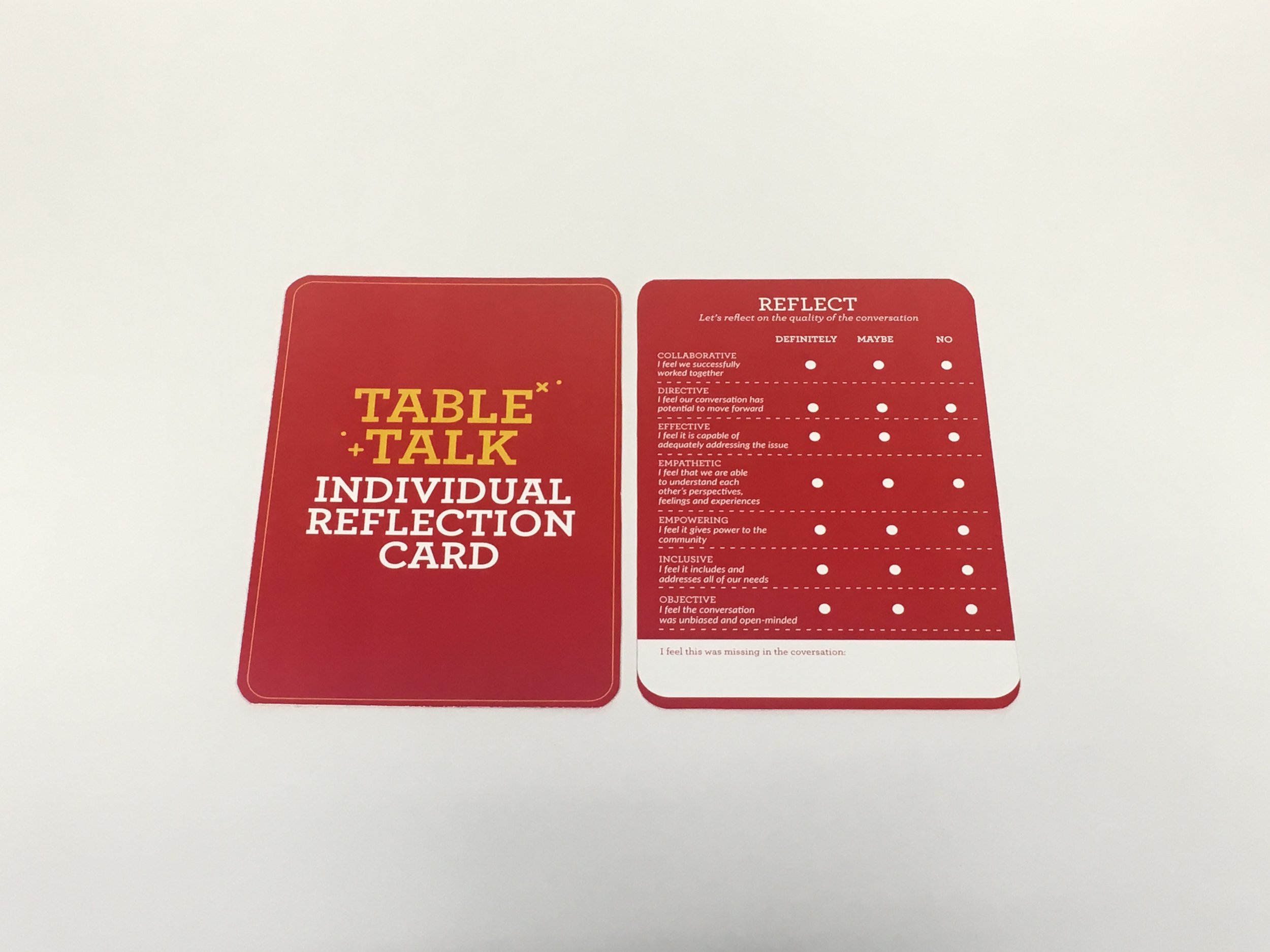
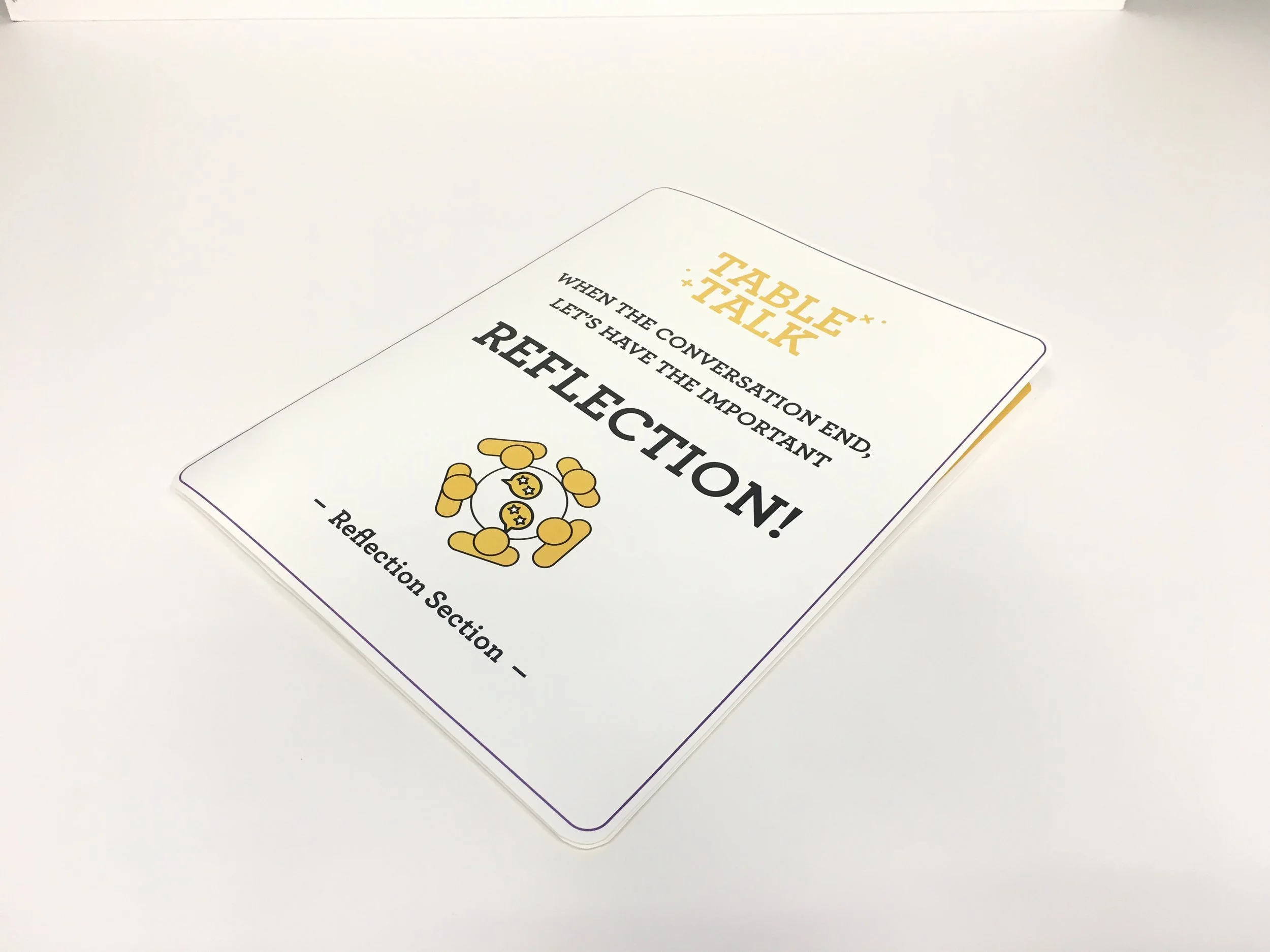
What Comes Next?
This project reinforced that complex environmental justice issues cannot be solved overnight or in isolation—they require sustained, collaborative effort across multiple stakeholders and deep community trust built over time. Our ten-week engagement laid detailed groundwork for future partnerships, both within the Hudson Hill community and between residents and external stakeholders like the Georgia Port Authority, city government, and other industries. The extensive primary research, stakeholder mapping, and community relationships we established provide a foundation for continued SCAD collaborations and community-driven initiatives.
Moving forward, the Table Talk toolkit needs to be digitized and evolved into a broader communication platform that can facilitate ongoing dialogue between government, community, industry, and advocacy organizations. This digital evolution could include virtual facilitation capabilities, expanded scenario libraries, and data collection features to track collaborative outcomes over time. The toolkit should also be adapted for use in other near-port communities facing similar environmental justice challenges, creating a scalable model for equitable stakeholder engagement.
Most critically, future efforts must prioritize community ownership and leadership development. Hudson Hill residents have expressed clear visions for their neighborhood's future—the next phase should focus on building their capacity to lead these initiatives while maintaining supportive partnerships with external allies. This includes supporting the formation of their internal environmental justice group, securing funding for youth development programs, and ensuring that any future interventions are truly community-driven rather than externally imposed. Success will be measured not by the sophistication of our tools, but by the community's increased agency in shaping their own environmental and economic future.


